The Best Home Security Systems in 2025 — Tested by Experts
From the most innovative to the best video monitoring, we tried, tested, and ranked the top home security systems for every home.

SafeHome.org may receive compensation from some providers listed on this page. Learn More
We may receive compensation from some providers listed on this page. Learn More
Most Trusted Name

ADT is a pioneer in home security with highly customizable wireless and hardwired security options. ADT’s indoor, outdoor, and doorbell cameras are all smart-home ready, which can lower your home insurance premium. Grab a 36-month ADT video plan today and get a Google Nest Outdoor Camera and Video Doorbell for free—or try one of their brand new DIY packages with pro monitoring.
Innovative Security Pick

SimpliSafe is a low-cost, DIY home security system with innovative professional monitoring features. Their monitoring plans start at $19.99 per month and now allow for monitoring agents to see and speak to intruders, potentially deterring crime and speeding up police response.
Smart Security Pick

Vivint is a top–of-the-line wireless security system with advanced smart home features and indoor and outdoor cameras designed to detect and deter crime before it happens. Their 4-star-rated mobile app lets you monitor all your connected smart devices — cameras, locks, lighting, and heating — from one place.
Most Trusted Name
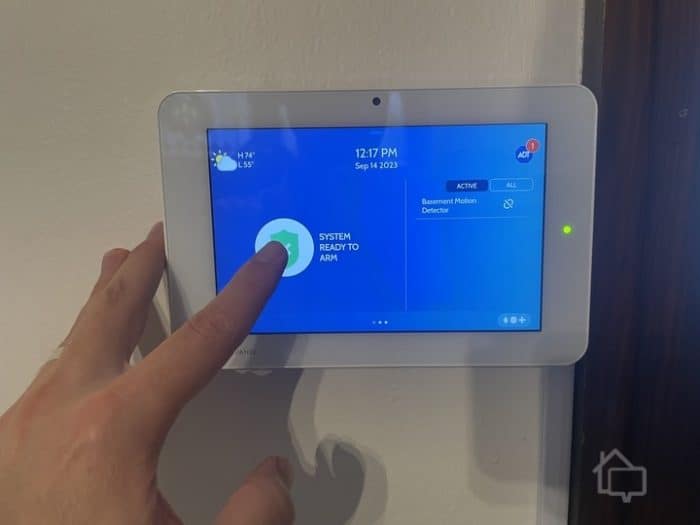
Bottom Line: ADT is a highly-customizable system that offers wireless and hardwired systems. We consider them the pioneers of home security and the most popular provider amongst homeowners.
Innovative Security Pick
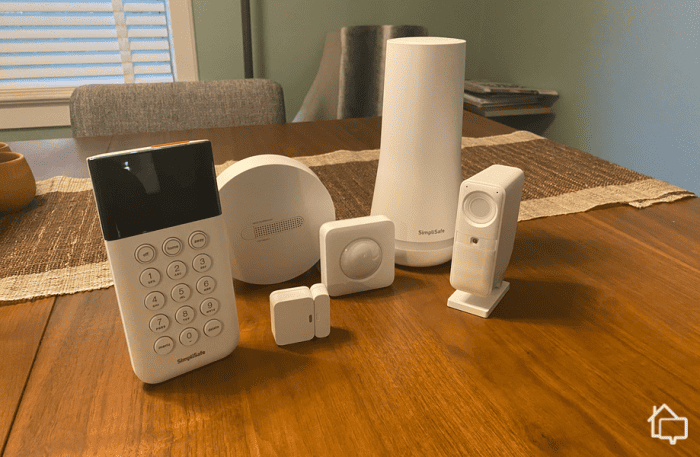
Bottom Line: There’s a lot going for SimpliSafe, a no-contract system that simplifies home security. SimpliSafe delivers DIY protection at refreshingly affordable prices.
Smart Security Pick
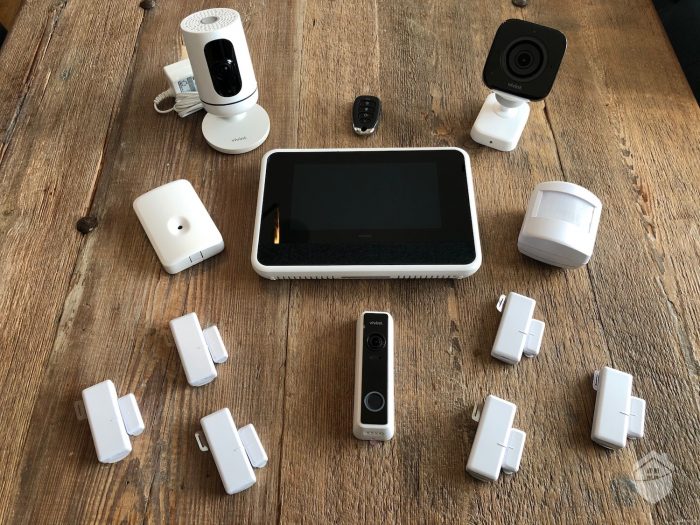
Bottom Line: Vivint is a high-end wireless system that offers speedy professional installation. They have indoor, outdoor, and doorbell camera options and advanced smart home capabilities.
Picking the best security system sounds easy; that is, until you see how many good options there are out there. That’s why we offer our expertise. With our experience testing home security systems, we can help you make informed buying decisions.
Even with insights from us though, it’s still up to you to decide which security system can best protect your home. We’ll offer you the best options we’ve tested, from which you can take your pick based on factors you prioritize, whether that’s the cost of the security system, features offered, or equipment available. Personally, we think ADT is the most well-rounded system. It has great equipment (including options from Google Nest), a reliable monitoring service, and competitive prices. But, you’ll see nine other options, from DIY systems like SimpliSafe and Cove to more established brands like Vivint and Alder.
Disclaimer: Our 2024 top-pick is ADT. However, we tested the ADT Control system which first launched in 2019 and continued to receive feature and equipment upgrades until July 2024. As of August 2024, ADT has launched a new security system called ADT Plus, which now supports both DIY and professional installation. We’re still testing ADT Plus, but our first impression is that it offers most of the same features we liked about ADT Control plus new innovative features like Trusted Neighbor. More on that below.
We believe the only way to give you trustworthy home security recommendations is by testing the systems ourselves. To do that, we buy the systems, set them up in our own homes, and live with them for weeks or months at a time. This rigorous approach to testing helps us compare the equipment, quality of service, and how well they provide protection. That way, we can give honest and trustworthy recommendations.
Many factors come into play when testing security systems, so we level the playing field. We test the equipment in a two-story, 2,200-square-foot house owned by one of our security experts. We find that testing security equipment in an actual home yields the most objective and accurate results.
We also installed components in roughly the same locations to fairly compare their performance. Here’s what our setup looks like:
We use our security expertise to choose the most critical factors when choosing the best security systems. These are the factors that are the top priority:
Unlike other review sites critiquing everything from TVs to pillowcases, our experts only focus on home security and personal safety topics. Our full focus goes to rigorously reviewing and testing security systems. The experts who worked on this guide include:
Our team is the most experienced home security team on the internet. We have been testing security systems since 2016, and our work has been featured in The New York Times, The Washington Post, and dozens of other major outlets. Collectively, our experts bring to the table:
Every recommendation comes from first-hand product experience and a deep understanding of the home security industry. So with that, let’s take a look at the best home security systems in 2025.
From Joshua Lee, Active-duty Police Sergeant
| System |
ADT Security

|
SimpliSafe Home Security

|
Vivint Smart Home

|
Cove Security

|
Alder Security

|
Frontpoint Home Security

|
Brinks Home Security

|
Ring Alarm

|
abode

|
Deep Sentinel Security

|
|---|---|---|---|---|---|---|---|---|---|---|
| Ranking |
1st

|
2nd

|
3rd

|
4th

|
5th

|
6th

|
7th

|
8th

|
9th

|
10th

|
| SecureScore™ | 9.2 | 9.2 | 9.1 | 8.8 | 8.8 | 8.7 | 8.7 | 8.2 | 8.0 | 7.9 |
| Best For | Most Trusted Name | Innovative Security Pick | Smart Security Pick | Best Cellular Monitoring | Fastest Response Favorite | Custom Features Pick | Google Home User Favorite | Budget Buyer’s Pick | Top Innovative IoT Hub | Best Video Monitoring |
| Installation | DIY or professional | DIY or professional | Professional | DIY or professional | DIY or professional | DIY or professional | Professional | DIY or professional | DIY or professional | DIY or professional |
| Warranty | 1 Year | 1 Year | 120 Days | 1 Year | Lifetime | 3 Years | 1 Year | 1 Year | 1 Year | 1 Year |
| Monitoring | Professional | Self or professional | Professional | Professional | Professional | Professional | Professional | Self or professional | Self or professional | Professional |
| Requires a Contract? | 36 months | No | 48 months | No | 36 months | 36 months | 36 months | No | No | 12 months |
| Cameras Available? | Yes | Yes | Yes | Yes | Yes | Yes | Yes | Yes | Yes | Yes |
| Environmental Sensors | Yes | Yes | Yes | Yes | Yes | Yes | Yes | Yes | Yes | No |
| Read Review | ADT Review | SimpliSafe Review | Vivint Review | Cove Review | Alder Review | Frontpoint Review | Brinks Review | Ring Alarm Review | Abode Review | Deep Sentinel Review |

If you haven’t taken a look at ADT in a while, you may be surprised how much it changed recently. Even with 150 years in the industry, ADT changes with the times to meet customer demands, and that’s one reason the company has lasted so long.
We could talk about ADT’s expanded partnership with Google Nest, which improved its equipment line. Or, we could talk about the new streamlined pricing. We could even talk about how the company has finally begun allowing customers to install their own systems and – even more surprising – self-monitor their systems.
Maybe the biggest shock of all, though, is the fact that ADT has reduced prices, both on equipment and monitoring. We don’t see that a lot these days, what with SimpliSafe increasing its prices for the third time in four years and Cove following suit.
Let’s start with those recent price changes ADT made. ADT is more affordable now, although still pricier than many of its DIY counterparts. On top of introducing a revamped DIY option – ADT Self Setup – it consolidated its packages so that it’d be easier to pick one to customize. You can actually start with the Build Your Own package now for as low as $269, but you’ll often find bigger savings from these pre-built packages.
| Equipment Packages | One-Time Pricing | Monthly Payments |
|---|---|---|
| Outdoor Video | $648.98 | $18.03 |
| Front Door Protection | $718.98 | $19.97 |
| Total Safety | $1573.95 | $43.72 |
ADT’s monitoring prices have gone down as well. The company used to charge up to $60 per month for monitoring. Plans now range between $29.99 to $44.99 per month. Yet, you still get all the same great features as before, including access to 12 separate monitoring centers, video verification services, and complete integration with both Alexa and Google Home.
FYI: You don’t have to pay for professional installation with ADT anymore with the introduction of the ADT Self Setup system, but it can be worth the money having trained technicians suggest equipment placement, set up your system, and explain how everything works.
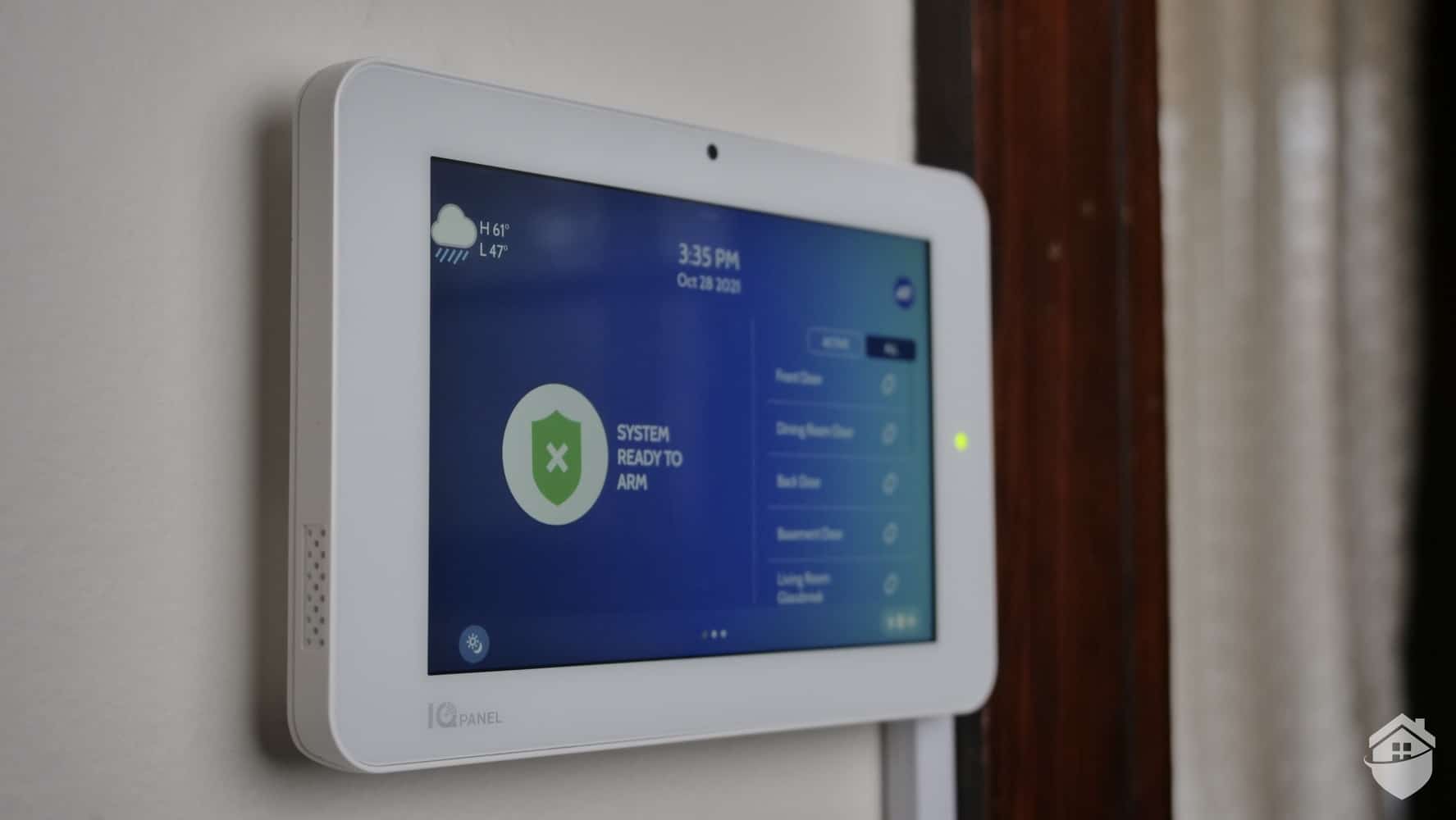
ADT Control Panel
ADT doesn’t make its own equipment, but that’s not a bad thing. It offers equipment from a range of reputable manufacturers including GE. It now offers Google Nest equipment as well, including its line of Nest Cams, smart thermostats, and smart speakers and displays. In the middle of everything is the ADT Base, a hub that glues everything together.
We like this approach. If you decide that ADT’s no longer for you down the line, you can keep using the equipment, especially the ones from Google. As we learned when we reviewed the Nest Cams, these are excellent standalone security cameras. We also want to point out that while most of the equipment is from third-party manufacturers, they all work with ADT’s latest app – ADT+. The app is another one of ADT’s strong points. It’s easy to use, it’s modern both in terms of design and features, and it works well.
Note: Keep in mind that ADT requires a contract, unlike most DIY options that will let you come and go as you please. Its monitoring contract locks you into the professional monitoring service for at least 36 months (24 months in the state of California).
Our experience was with ADT’s professionally installed system, and it was overwhelming. There was always something going on; we had it installed by a technician, we had to sign a contract, and we had to sit through a consultation. In all fairness, ADT streamlined the process. It took us only two business days to get an ADT system installed after we initially called for a quote. Other systems, like Vivint and Alder, took three to five days.
Once installed, our initial impression was that ADT is a modern, high-tech security system. The touch-screen control panel controlled the system functions; we had an app to access our cameras and manage our system on-the-go. We also integrated ADT with voice control using our Nest Home smart speakers.
Note: The new ADT Plus system bids goodbye to the touch-screen control panel, replacing it with a router-like hub with a built-in numeric keypad. Features that require a touch-screen (e.g. smart home controls) can now only be accessed through the ADT+ app, the companion app for the ADT Plus system.
The other devices were more traditional though. The sensors were quite bulky, but no worries because ADT has replaced them with sleeker ones now. Although we must admit – we’ll miss the brown door sensors the technician installed to match our door trim (see image below). When it comes to home protection, ADT takes a more traditional approach.
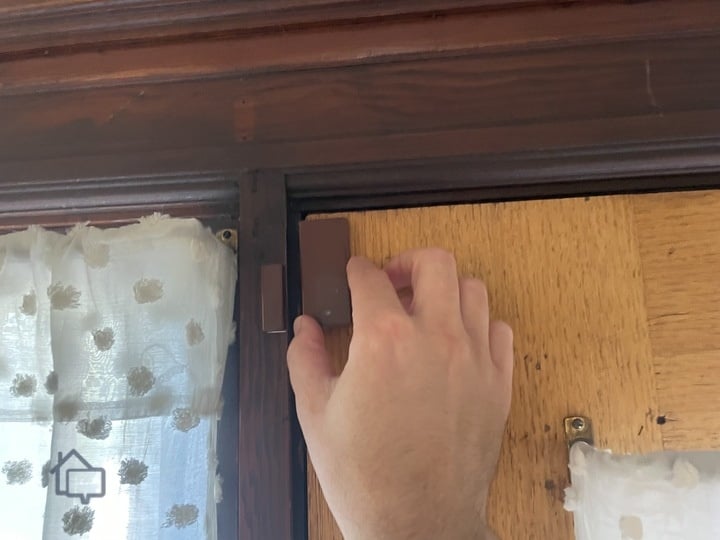
Our ADT door sensor camouflaged nicely by matching our brown door trim.
As for functions, we pretty much got what we expected from ADT’s sensors.
Pro Tip: We recommend placing glass break sensors in rooms with multiple glass windows or rooms with sliding glass doors.
There are a few things to consider about ADT though. For one, there’s no longer a touch screen control panel if you buy now. The keypad in the ADT Base hub controls only security system functions, and most other features are accessible only through the app. That can pose a problem if you have family members who are not so proficient with apps and smartphones.
We should also note that customer service can sometimes be a mixed bag. We were happy with the service we got, but because ADT has a network of dealers nationwide, some users we interviewed have had bad experiences.
Lastly, watch out for the contract terms. If you see yourself moving soon or if you’re not sure you can hold up your end of the three-year contract, ADT might not be the one for you. There is a cancellation fee — a hefty one — and the moving policy could be more customer-friendly.
| Equipment cost | Packages starting at $269 |
|---|---|
| Monitoring options | Professional |
| Monitoring cost | Starting at $29.99 per month |
| Contract length | Starting at 36 months |
| Installation options | Professional or DIY |
| Smart platform integration | Alexa and Google Home |

SimpliSafe is our next top contender. It started out as a renter-friendly DIY security system in 2006. While it’s still a great DIY option, its innovative security features have made it capable of going toe-to-toe with ADT and other more traditional security systems like Vivint. And thanks to its DIY nature, it’s also a lot more flexible and versatile as those options. It doesn’t tie you to a contract, you can take the system with you if you move, and you can even use it as a self-monitored alarm. We strongly recommend sticking with professional monitoring.
SimpliSafe is one of those DIY companies that are cheaper than ADT. The catch is you’ll have to purchase the system upfront or sign up for financing with a maximum repayment term of 24 months. In comparison, ADT and Vivint offer equipment financing up to 60 months. SimpliSafe is cheaper in the long run, but expect the first- and second-year ownership cost to be higher than ADT.
To give you a sense of how much SimpliSafe costs, take a look at the premade packages available on SimpliSafe’s website below. Keep in mind, those are regular prices. SimpliSafe often runs deals that mark prices down by up to 60 percent.
| SimpliSafe Packages | Total Cost | Monthly Cost with Financing (24 months) |
|---|---|---|
| The Foundation | $249.96 | $10.42 |
| The Essentials | $279.95 | $11.66 |
| The Hearth | $399.91 | $16.66 |
| The Lighthouse | $469.93 | $19.58 |
| The Knox | $479.87 | $19.99 |
| The Haven | $519.86 | $21.66 |
| The Beacon | $709.90 | $29.58 |
On top of budget-friendly equipment, SimpliSafe offers affordable professional monitoring. It starts at $19.99 for the Standard Plan but we highly recommend the $29.99 Fast Protect plan for its high-end features and extensive video security.
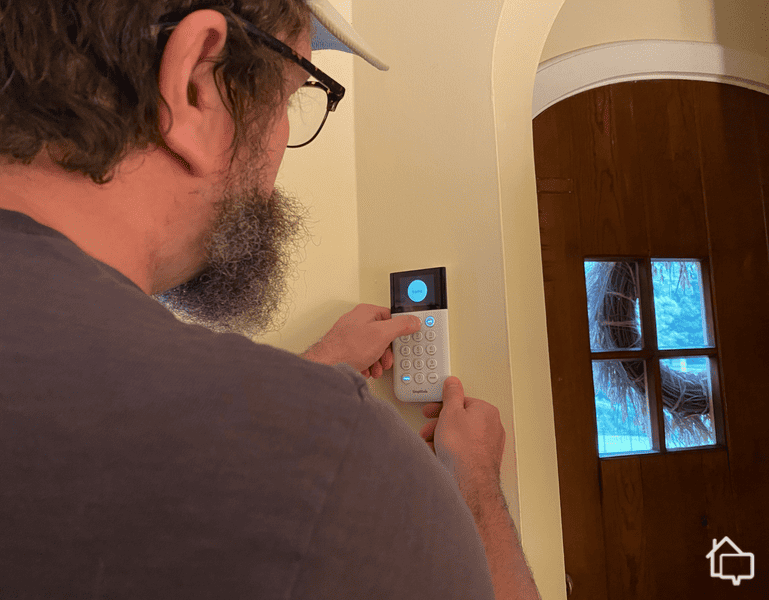
Setting a pin on the SimpliSafe keypad.
SimpliSafe became known for being a simple, DIY option, but in all the years we’ve been testing it (since 2010), we’ve come to appreciate its innovative spirit. That’s especially true now that it has added a bunch of new cutting-edge features to its Fast Protect monitoring plan. For about a buck per day ($29.99 per month), SimpliSafe will monitor your security system, give you cloud storage for up to 10 security cameras, and offer you Live Guard Protection, Alarm Texts, and video verification.
FYI: The Fast Protect monitoring plan also throws in a 10 percent discount on any new hardware you purchase from their store. I plan on adding more equipment in the future, so this is a nice little bonus.
Alarm Texts and video verification are similar to ADT’s SMART Monitoring. What truly stands out is Live Guard Protection. If you have a Smart Alarm indoor camera — a newer version of the SimpliCam indoor camera we reviewed — SimpliSafe will access its live video and two-way audio to respond to alarms. Agents will be able to speak directly to the intruder. They will let the intruder know they’re being recorded and that police are on the way.
In a recent press release, SimpliSafe also announced it’s bringing Live Guard Protection to its outdoor cameras too. This time, with a new smart twist: facial recognition. When the outdoor camera detects someone approaching, it uses AI to see if that someone matches the profile of one of the registered house members. If it doesn’t, the camera initiates Live Guard Protection and starts a two-way audio link with the monitoring center. This feature is even better than Smart Alarm’s Live Guard Protection, in our opinion, because it has the potential to stop break-ins before they even happen. Just note that it’s not available to all users yet. Only select early access participants are able to use the feature for now.
SimpliSafe is the original DIY company, so even though it now offers professional installation options, we knew we could handle it all ourselves and save a bit of cash in the process. The whole thing took no more than 45 minutes, thanks to SimpliSafe’s streamlined, user-friendly instructions. About 30 of those 45 minutes were spent wiring the SimpliSafe Video Doorbell Pro to our front door, and there’s really no way to shorten that part of the process.
Once we had everything installed, SimpliSafe kindly gave us three days to test the system out in practice mode. Basically, we received timely alerts through the app, but the monitoring center didn’t alert emergency services. Think of it like training wheels while you learn to use your system. And three days was enough time. By that point, we knew enough to avoid mistakes and we were ready to go into full-on professional monitoring mode.
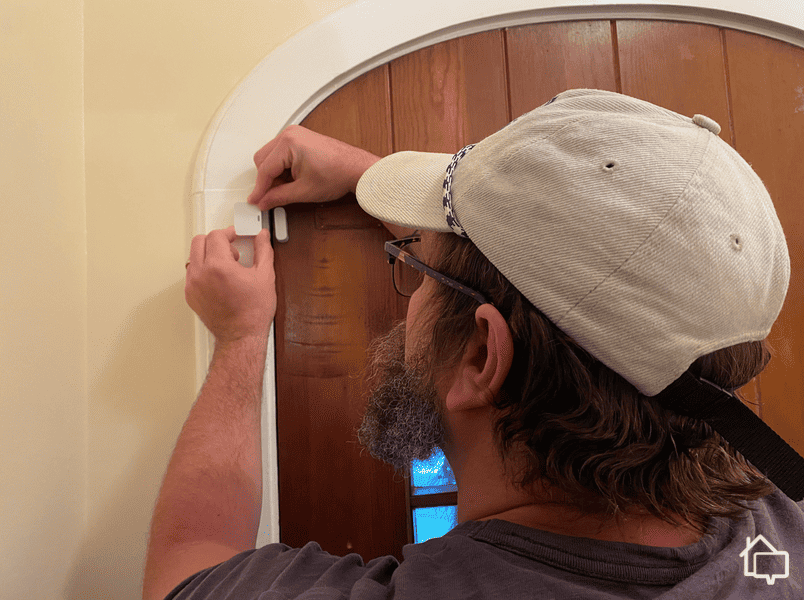
Installing one of my SimpliSafe entryway sensors.
How did it all go?
The sensors were snappy in detecting possible intrusions and sending alerts. There was a 30-second entry delay. This is standard with most security systems, but you can customize it in the app. We recommend setting it to only 10 to 15 seconds if the keypad is close to your door. Better yet, get a key fob and use it to disarm the system before entering your house.
FYI: Most security systems have an entry delay. The sensors don’t set off the alarm right away to give you time to disarm the system. However, in a real break-in scenario, the entry delay gives the burglar a lot of time to get away. That’s why if possible, we recommend turning off the entry delay and using a key fob or the app to disarm the system before opening your door.
In terms of response times, we commend SimpliSafe’s monitoring center. They sent us Alarm Texts within 15 seconds of being triggered during our break-in simulations. And that’s with the entry delay set to 10 seconds. Alert phone calls came in about 30 to 45 seconds. Here’s the full alerting process.
Keep in mind that that’s the alerting process for the $29.99 Fast Protect plan. If you go with the $19.99 Standard Plan, SimpliSafe will skip the third step and go straight away to calling your phone. The average response time is 40 to 50 seconds, accounting for the 10-second entry delay we set.
SimpliSafe worked pretty much as expected. It’s certainly not a perfect home security system. We’d like to see more outdoor security camera options from SimpliSafe. And what’s with that push-button control panel? Most systems these days have sleek touch-screen panels. But overall, the flexibility, affordability and fast response time of SimpliSafe makes it a good pick. Add to that the fact that it’s a security system that doesn’t require contracts.
| Monitoring options | Professional and DIY |
|---|---|
| Installation | Professional and DIY |
| Smart platform integration | Alexa and Google Home |
| Equipment Cost | Packages starting at $249.96 |
| Monthly Monitoring Cost | From $9.99 |
| Contract Length | Monthly |

Vivint’s home security model resembles ADT’s, but trust us, Vivint is much more than an ADT alternative. As good as ADT equipment is, for instance, Vivint’s is even better. As smart as ADT systems are, Vivint systems are smarter. Of course, the price is also a bit higher as well. The bottom line is that Vivint offers white-glove service for top-tier systems, but at a cost that will keep them out of reach of some homeowners.
Interesting fact: The name Vivint is a combination of the words vivere (“to live” in Latin) and intelligent. Vivint essentially means “to live smart,” which we can say is the ethos behind the Vivint system. It offers a lot of smart features that can automate and make your everyday life more convenient. That’s why Vivint is our smart security pick.If you thought ADT was expensive, you’re going to want to brace yourself for Vivint’s pricing. ADT’s cheapest package costs $499. Vivint’s cheapest package costs $100 more. If you start comparing the price of individual equipment pieces, the differences are even more extreme. Vivint’s security cameras are some of the priciest we’ve seen anywhere. Take a look:
| Security Cameras | Vivint | ADT |
|---|---|---|
| Indoor camera | $249.99 | $199.00 |
| Outdoor camera | $399.99 | $309.99 |
| Outdoor camera with floodlight | $649.00 | $299.99 |
| Doorbell camera | $249.99 | $229.99 |
As we like to say, you can’t just look at price when you’re deciding whether or not to invest in a home security company. You have to think in terms of value. Vivint’s prices are more than justified by unique features like AI person detection and something the company calls Smart Deter (we get into that below). Maybe you can’t afford Vivint – we can’t. You can’t say these systems aren’t worth the money, though.
And when it comes to prices, the news isn’t all bad. Vivint requires professional monitoring, but monthly fees start at the reasonable price of $39.99. That’s more than SimpliSafe and ADT, but not a lot more.
Pro Tip: Another similarity with ADT is that Vivint offers financing on equipment. You can spread the payments over a maximum of 60 months, which drops package prices to between $10 and $30 per month.
A closer look at the Vivint Door and Window Sensor
Vivint offers just about any piece of home security equipment you could want, from entry sensors to smoke detectors. If you’re going to sign up with a high-tech home security company, though, you might as well take advantage of the most high-tech pieces of equipment.
Vivint’s Smart Hub is both the heart and brains of the Vivint system. Again, there’s resemblance here to ADT’s smart hub, but only a resemblance. Vivint’s version offers far more functionality, like the ability to view live security camera feeds. Most importantly, though, it controls the entire system, from connecting with Vivint’s sensors to listening for carbon monoxide alerts. It also communicates to the outside world, ensuring the Vivint monitoring center always knows what’s happening at your home. Plus, it features two-way audio, so monitors can talk with you directly in the event of an emergency.
Vivint’s security cameras are equally impressive. Their Smart Deter features employ a combination of lights and alarms to deter anyone who might be looking to cause trouble. Don’t start thinking this is just motion detection by another name. Smart Deter knows exactly how long someone has been on your lawn, so it can distinguish between neighbors and genuine threats, and you can customize it so it notices exactly what you tell it to notice, nothing more, nothing less. Try that with a plain old motion detector.
Vivint is no DIY system. We had an installer from the company named Don install it. He performed the job so proficiently, we named Vivint one of the top pro-installed security systems.
Following the installation, the first thing that jumped out to us was how well Vivint seems to have mastered the art of automating homes. We had a ton of options to customize our system and how it responds to us. We got to set a schedule for automatically arming and disarming the system; we programmed our cameras to record based on sensor triggers. We even got our thermostat to adjust on its own depending on whether we’re home or away. It wasn’t hard at all to automate, either. We used the Vivint app for the most part where we were able to set triggers and actions, kind of like with IFTTT.
Pro Tip: IFTTT stands for If This, Then That, which is the building block recipe for creating most automations. Vivint doesn’t work with IFTTT, but its automation platform allows for the creation of IFTTT-like rules. And in case you want to check them out, see our roundup of security systems that integrate with IFTTT.
That’s not to say Vivint sacrifices security for flashy AI and smart-home features. It’s quite the opposite. Those Vivint automations allowed us to use the system more efficiently and improved our security too. Vivint’s sensors didn’t just send alerts; they also triggered automations designed to deter crime. For example, we set our living room motion sensor to turn on the living room lights when it detects movement while in Away mode. That way, the lights would surprise the burglars and (hopefully!) send them packing. We couldn’t do that with our SimpliSafe system because again, it doesn’t work with smart-home devices.
Those automations are in addition to Vivint’s normal alarm response, which was pretty standard. The alarm calls came in about 30 to 45 seconds on average, but alarm texts averaged less than 10 seconds. Of all the systems offering text alerts (e.g., ADT, SimpliSafe, Alder, and Cove), Vivint was the fastest we tested.
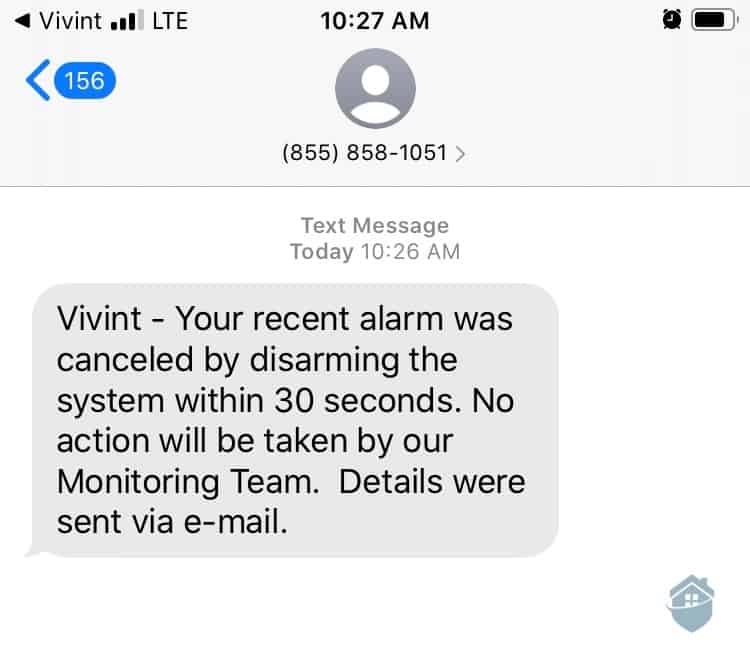
Vivint Text Notifications
The two-way audio link to the monitoring center via the Vivint Smart Hub was also a nice touch. You won’t have to pull your phone out of your pocket to cancel a false alarm; simply give the agent your verbal passcode. Make sure everyone in your household knows the passcode. Vivint is strict about that, as it should be. If it’s a real alarm, on the other hand, the voice coming from the Vivint Smart Hub has a good chance of scaring burglars away.
Pro Tip: You can adjust the Smart Hub’s volume. Tap the “speaker” icon in the top-right corner and use the slider under Panel Volume. You can also adjust the doorbell chime volume from there if you have a Vivint Doorbell Camera Pro.
| Monitoring Options | Professional only |
|---|---|
| Installation | Professional |
| Smart Platform Integration | Alexa and Google Home |
| Equipment Cost | From $599.99 |
| Monthly Monitoring Cost | From $40 |
| Contract Length | 48 to 60 months |


Cove has only been around for half a dozen years. Keep in mind, though, that most home security companies – ADT excepted – are pretty new to the game. The thing is, technology is central to home security systems these days, and companies that can’t keep up with the tech curve don’t last long. Cove managed to hit the ground running, and has stayed abreast of the latest technology. So, for example, it offers cellular connectivity on all of its systems. That means systems work without power or internet so you’re protected in any eventuality. It’s no wonder Cove has built a name for itself even in such a short time.
The knock on Cove is its equipment selection. This is not a company that’s going to offer you fancy smart devices (see Vivint, for example). What you can count on is solidly built equipment that will keep you and your family safe, and you can be sure that you’ll get it all at an affordable price.
A good bit of Cove’s popularity has to do with price. As a starting point, Cove’s everyday costs are pretty affordable. On top of this, though, you can almost always find the company running some deal or other, often for as much as 50 to 65 percent off. $500 systems for just $175. Those kinds of prices put home security within anyone’s reach. And we know, it’s a bit of a tactic. That system you get for $175 probably isn’t worth $500. It’s a darn good system, though, for a darn good price.
Here’s Cove’s regular pricing for its equipment.
| Cove Equipment | Regular Price |
|---|---|
| Cove hub | $100 |
| Alarm panel | $150 |
| Door/window sensor | $15 |
| Motion detector | $30 |
| Glass break sensor | $35 |
| Secondary siren | $120 |
| Smoke detector | $95 |
| Carbon monoxide detector | $95 |
| Key fob | $25 |
| Medical pendant | $20 |
| Eufy Indoor Cam | $59.99 |
| Eufy Doorbell Cam | $99.99 |
| Eufy Outdoor Cam | $129.99 |
FYI: Being from a third-party supplier, the Eufy cameras offered by Cove aren’t included in the percentage off deals. They, however, come with a fixed-price discount up to $50. Learn about Eufy in our Eufy camera review.
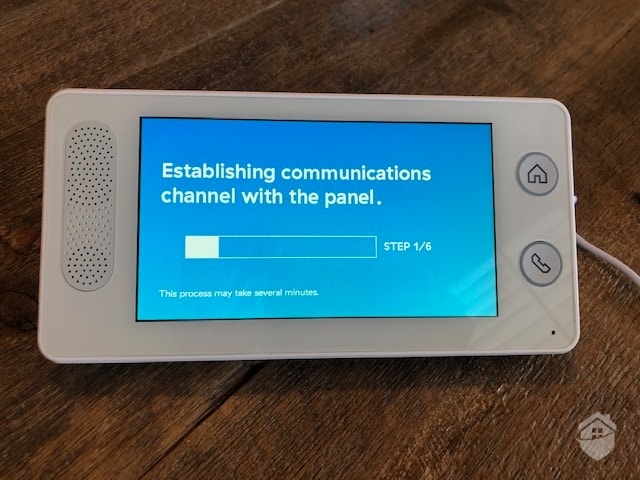
Starting the setup process on the Cove control panel.
Cove equipment is all solid, if not necessarily noteworthy. Everything does what it’s supposed to, and it seems built to last. We would be remiss, though, if we didn’t spend time talking about Cove’s control panel, since it is unique.
Burglars are always looking for new ways to outsmart home security systems. One of their recent inventions is the crash-and-smash technique. Essentially, they try to destroy your control panel as soon as they’re inside, hoping to deactivate the entire system. This actually works on a lot of systems. Control panels with built-in keypads usually serve as the hub for all the system’s communication. Take it out, and a house is yours.
To help combat this technique, Cove separates the hub and keypad into two devices. The keypad controls the system, but it doesn’t communicate with the Cove monitoring center. Even if you take it out, you’re not going to disable the system’s ability to do its job. You can still install your keypad near the door, so it’s easy to operate your system on the way in and out. Tuck the hub somewhere discreet, though, and you’re protected even if thieves take out the keypad.
FYI: I may or may not have accidentally dropped the hub on a few occasions. Fortunately, it’s well-built. The screen never cracked, and I didn’t notice any functionality issues.
It’s also worth pointing out that the hub uses dual-path communication. It can send alert signals off of your internet connection or the built-in cellular chip, but Cove recommends you keep both lines active. That way, when one is down, the other takes over. That’s why Cove is one of the top cellular security systems.
After taking it for a test ride, we can even say that Cove definitely has the potential to give industry giants like SimpliSafe and Frontpoint a run for their money, with money being the operative word. Unlike SimpliSafe, there’s no option with Cove to self-monitor. However, professional monitoring is just $17.99 to $27.99 per month, lower than Simplisafe’s Fast Protect monitoring. And Cove’s price point is a full $32.00 less than Frontpoint.
We’re also pretty high on Cove’s DIY process, which we found even easier than SimpliSafe’s. Our only complaint was the hub needing an Ethernet cable to connect to the internet. It works without an internet connection thanks to the hub’s cellular chip, but if you want the dual-path communication we mentioned earlier, a wired connection is necessary. Other than that, the setup went smoothly.
Pro Tip: Not up for DIY installation? Cove partnered with HelloTech to provide professional installation. HelloTech charges a minimum of $129 for the installation, but the fee scales with the size of your security system.
Nothing immediately jumped out to us when we got to testing the system. The sensors detected activity as they should; the Cove Hub and Alarm Panel’s built-in sirens were just loud enough. Plus, the cellular and internet connection kept the system online day in and day out. It’s a simple security system.
We do have a note on the alarm process though. Cove’s monitoring partner is RapidSOS, and they have a platform that automatically and digitally relays information to 911 in emergency situations. That, in our opinion, is faster, more reliable, and more accurate than having a monitoring agent verbally relay information to dispatch operators.
RapidSOS didn’t affect how quickly Cove contacted us. That process took about 40 seconds, which is the industry average. Where speed really matters, though, is in terms of how fast emergency personnel respond. We haven’t come across another system that offers this feature. How fast was it, in the end? If you take a look at our complete Cove review, you’ll find that police were on site in 15 minutes. We even ended up paying a fine for a false alarm. The point is, RapidSOS is definitely as good as Cove claims it is.
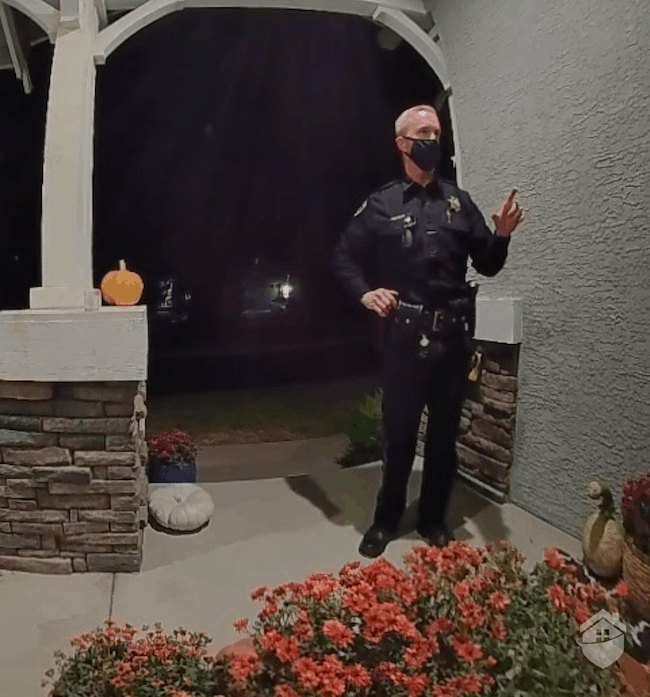
The police were called to our place during one of our break-in simulations.
| Monitoring Options | Professional |
|---|---|
| Installation | Professional or DIY |
| Smart Platform Integration | Alexa and Google Home |
| Equipment Cost | From $90 for hub and keypad |
| Monthly Monitoring Cost | From $17.99 |
| Contract Length | 1 month |

For a long time Alder was one of the best kept secrets in home security. That’s because while the company began in 2008, it only provided service to a small region of the country. Only more recently has Alder become a national provider. It’s become just as popular nationally, though, as it was regionally, mostly by using the same basic model of home security. Even now that it’s monitoring the whole country, for instance, it boasts average response times 10 times shorter than the industry standard — an astonishing 3.4 seconds per alarm. We didn’t personally experience response times quite that fast from Alder, but we can say it’s one of the faster alarm companies to respond to alerts. More on that later.
Like Vivint, Alder likes to keep its pricing information close to the vest. Head over to the company’s website, and you’ll find nothing about Alder’s pricing. Vivint’s excuse is that every system is bespoke, so it’s impossible to price a system. Alder’s excuse is that it charges different prices in different states. Not sure how we feel about that, especially if we’re in one of the pricier states.
We spent a little time on the phone with an Alder representative, though, so we can tell you one or two important pieces of information about the company’s pricing. For instance, Alder doesn’t charge upfront equipment fees, at least if you’re buying a base package. You get the system for free. The catch is that you have to sign up for a three-year monitoring plan. Of course, not everyone’s up for that kind of long-term commitment, but keep in mind that both ADT and Vivint require three-year plans, and of the three, only Alder gives you equipment with no up-front costs.
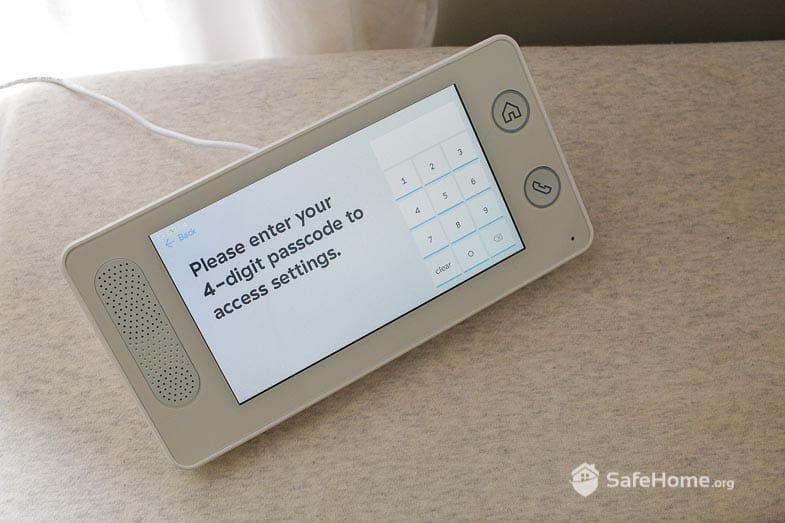
Alder’s touchscreen control panel up and running.
Of course, monitoring with Alder is a bit pricey – between $40 to $55. The company has to make its equipment money up somehow, though, and honestly, $40 – $55 is right around what Vivint charges per month for monitoring. If you’re interested in comparing these two systems further, we encourage you to read our complete Vivint vs. Alder.
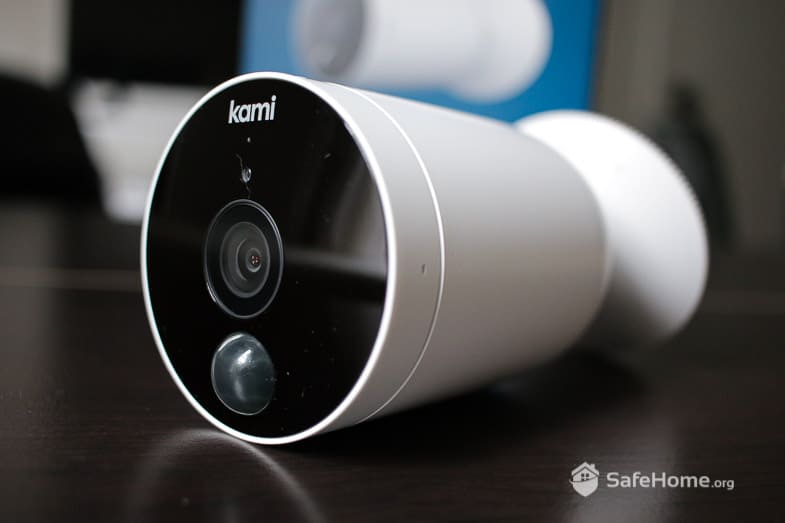
We did appreciate the two-way voice in the alarm panel itself. Sure, a loud siren is a good way to scare off burglars, but hearing a real human voice while you’re trying to quietly ransack a house is scarier. Besides that, it allows you to answer alarm calls even when your phone is not with you, as long as the alarm panel is within your earshot.
Pro Tip: Leaving lights and a few appliances on is another way to scare off burglars, especially when you’re away. That’s one of the things burglars don’t want you to know. Unfortunately, Alder doesn’t offer home automation features like ADT and Vivint does. If you’re looking to incorporate this tip into your security routine, there are better options for you.
Like ADT, Alder has made moves to become a more DIY home security system, and it seems to be adapting successfully so far. During our most recent tests, all the equipment arrived ready for self-setup. Devices were pre-programmed, so we didn’t have to bother making connections between all the pieces. We turned on the main panel, double-checked all the sensors were connected, and placed it all where it would be most effective. All in all, it was one of the better DIY installs we’ve done – not just fast but easy. We got it done in under 30 minutes, not that we’re trying to break any records.
Once we got it installed, we set up the system’s professional monitoring. By the way, that part of the service is required. Alder doesn’t work as a self-monitored alarm like SimpliSafe does. That said, just like Vivint, Alder will contact you in three ways in case of an emergency:
We didn’t quite see Alder’s advertised 3.4-second response time in 2017, but we’d categorize Alder’s response as “faster than average.
In addition to that, there were a few nifty features we noticed. For example, audible entry announcements. The control panel announces when a door or window opens (and you make the voice masculine or feminine). That’s a nice warning feature that doubles as a burglar deterrent. Another example is the activity log, which shows your sensors’ 200 most recent activities (e.g., front door opened, backdoor closed, movement in the living room, etc.). We found it as a great way to monitor the comings and goings, especially when we had relatives over.
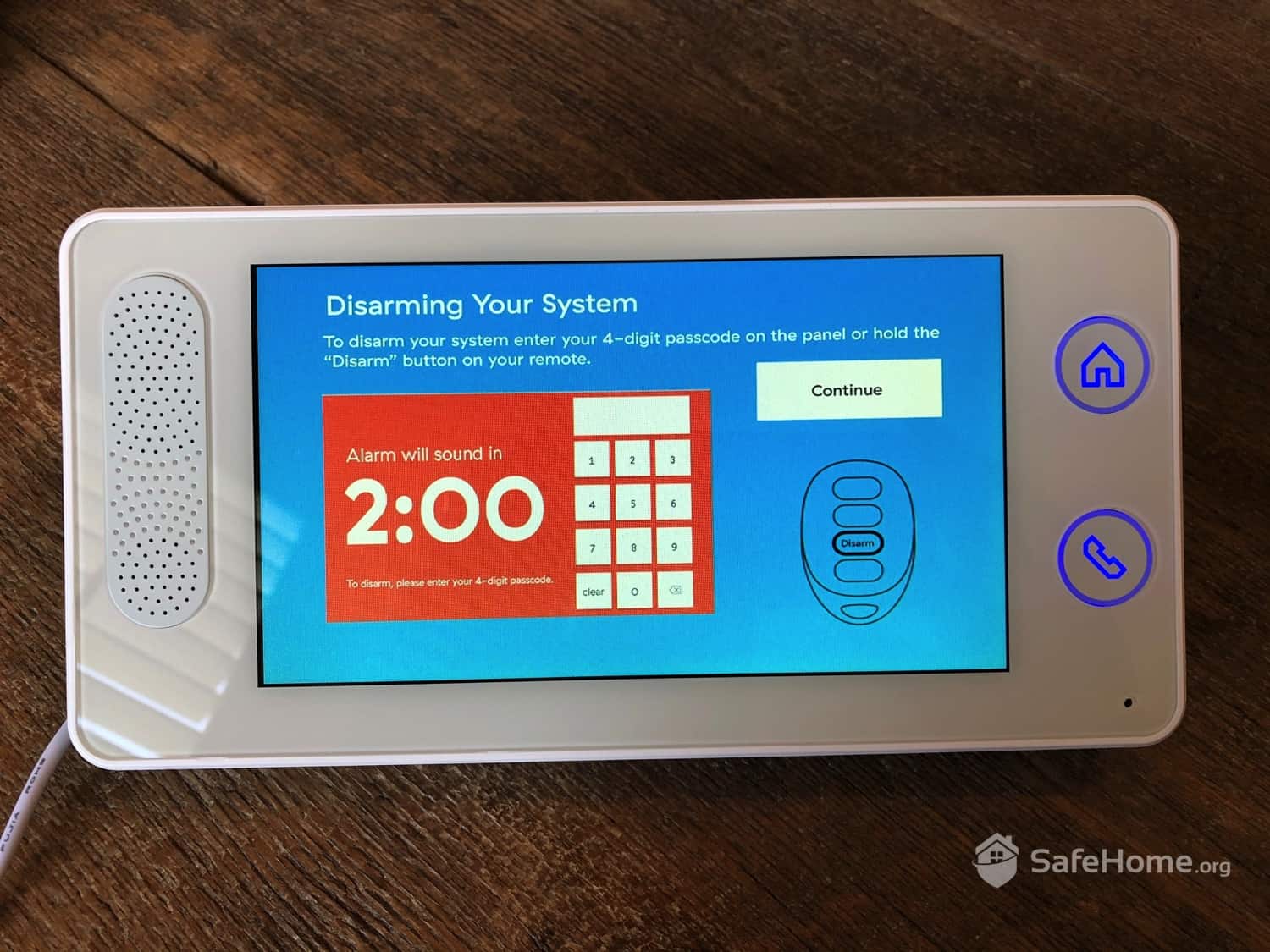
A demonstration of how to disarm the alarm.
Alder was reliable too. The door sensors in particular were very sensitive. Even a slight opening of doors would set off the alarms. The motion sensors were sometimes off though. Alder advertises that it has a 45-foot range with a 90-degree viewing angle. But sometimes, it doesn’t detect us when we’re coming from the other end of the hallway — roughly 40 feet from where the sensor sits.
Pro Tip: Motion sensors are most sensitive when the moving object is moving across the field of view rather than straight toward or away from the sensor. That’s one thing to keep in mind when placing your security sensors, especially with DIY systems.
We also learned that Alder is fully cellular. The panel doesn’t connect to Wi-Fi; it uses a cellular chip to communicate alerts. Cellular security systems are the most reliable, in our experience. That said, it would have been better if it had another way to communicate. Cellular signal rarely gets lost, but it still does from time to time.
Overall, Alder proved to be reliable and fast. It’s a bit simplistic, unlike Vivint and ADT that offers advanced customizations and automations. But we see it as one of Alder’s more attractive qualities rather than a weakness.
| Equipment cost | Packages starting at $360 |
|---|---|
| Monitoring options | Professional |
| Monitoring cost | Starting at $35 per month |
| Contract length | 36 months |
| Installation options | Professional or DIY |
| Smart Platform Integration | Alexa and Google Home |

Frontpoint’s original claim to fame was that it was among the first fully wireless home security systems. The company offered wireless sensors and cellular communication at a time when companies like ADT were still having to connect via landlines. That helped Frontpoint become an industry leader in the early 2010s.
Frontpoint remains a great system for anyone interested in wireless connectivity. But the company has also become known for its customizable systems. The hardware is scalable, which means it works for small apartments just as well as it works for large homes. In fact, it’s one of our top security recommendations for large homes. The features are customizable too, thanks to some really advanced automation options like geofencing.There are two sides to Frontpoint’s pricing. On the hardware side, Frontpoint is an affordable option. The smallest equipment package costs only $129. Even the priciest package with 14 pieces of equipment costs only $419. That’s cheaper than ADT’s most basic package ($499). And again, you can add pieces to your package so you don’t wind up buying equipment you won’t use. Plus, Frontpoint also offers equipment financing with repayment terms up to 36 months. Not bad, huh?
Here are Frontpoint’s equipment packages. Keep in mind, you can customize them with additional components if needed.
| Frontpoint Packages | Inclusions | Price |
|---|---|---|
| Starter |
|
$129 |
| Premier |
|
$169 |
| Ultimate |
|
$419 |
Frontpoint’s monitoring costs are pricey. The company charges $49.99 per month. That’s expensive no matter how you look at it, a full $10 more than Vivint, and $20 more than SimpliSafe’s most expensive plan. But that’s the other thing – Frontpoint’s plan is one-size-fits-all. Even if you’re only monitoring a small apartment, you’ll still pay $49.99. Frontpoint also requires you to sign up for a 36-month subscription.
Pro Tip: Don’t like the look of Frontpoint’s equipment packages? We found a “build-your-own” tool on the website that helps you pick the devices important to you.
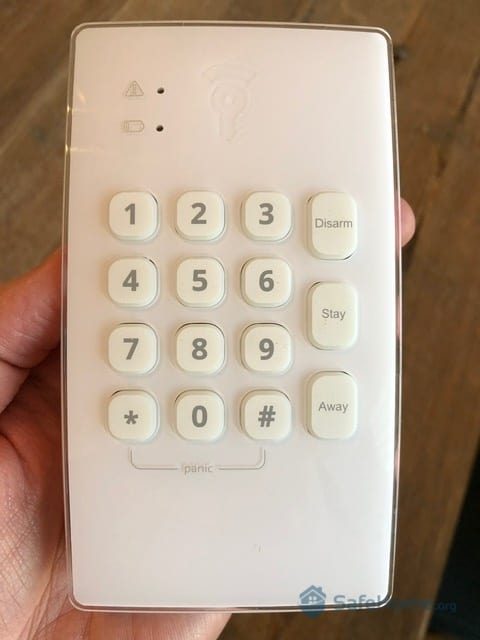
A closeup of the Frontpoint Keypad
Speaking of the $49.99 monitoring plan, Frontpoint’s one and only subscription unlocks all the features Frontpoint offers. That includes a unique feature called geofencing. Essentially, Frontpoint can use your phone’s location to automate things like arming and disarming your alarm, locking and unlocking your doors, and setting your smart thermostat. You might think that’s a common feature in smart security systems, but Frontpoint was the only system we tested that made geofencing work.
Geofencing was far from the only automation option Frontpoint offers though. It draws comparisons with Vivint, our top smart security pick. The only issue is that Frontpoint is more app-reliant. The analog keypad doesn’t really offer any smart-home functionalities. Unless your Frontpoint system comes with a touch-screen keypad ($149), you’re stuck with the Frontpoint app for smart-home controls. The Frontpoint app isn’t bad at all, but it’s not as streamlined for automation as Vivint’s app either.
Pro Tip: I noticed the motion sensors were sending me alerts every time they detected the slightest bit of movement. Even if it was a curtain caught in a breeze. It was easy to jump into the app and adjust the settings so the notifications would stop draining my phone battery.
Frontpoint offers a fresh take on DIY security with innovative, high-tech features like geofencing and home automation capacities. It’s the first DIY option that made this list with real home-automation capabilities. SimpliSafe, Alder and Cove all have smart-home integrations with Alexa and Google Assistant, but none of them offered customizable smart home features like Frontpoint did.
Thanks to automations, we were able to get more out of our Frontpoint sensors. They served as triggers, allowing us to create automation rules, such as:
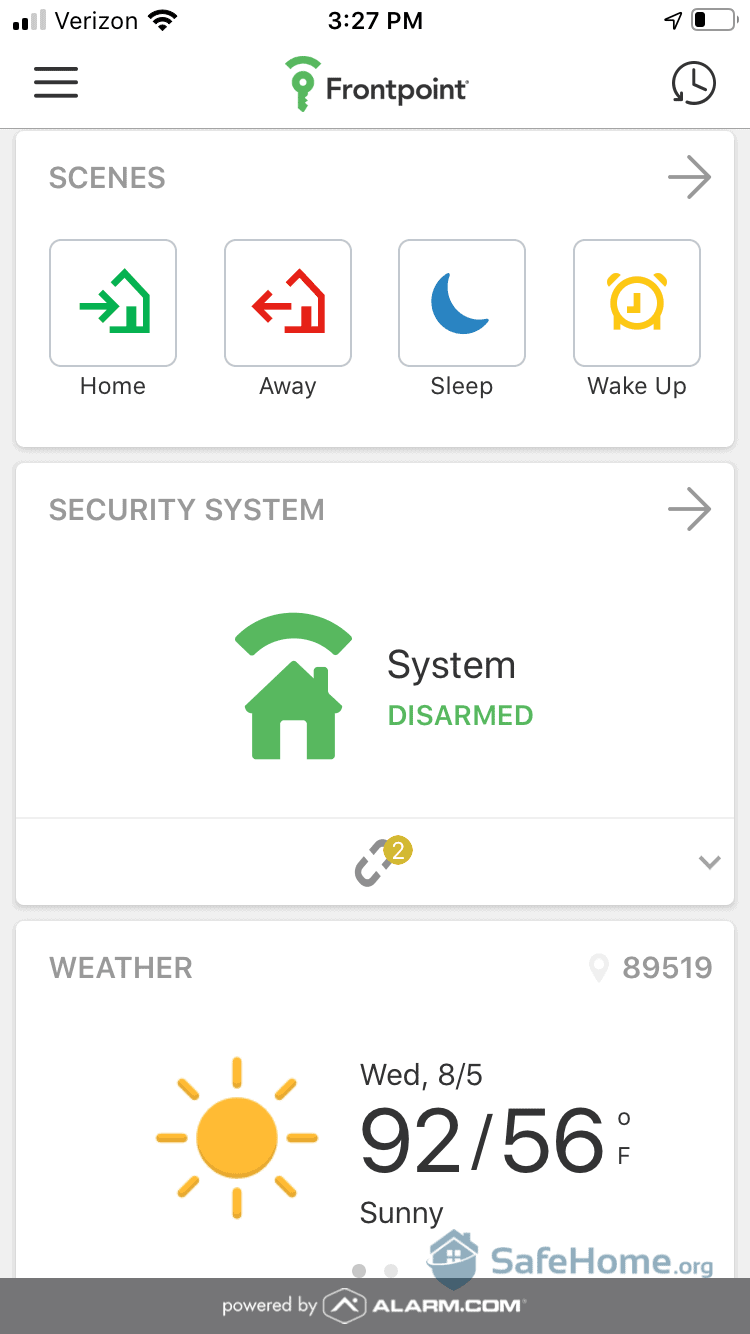
The home screen of the Frontpoint app makes it easy to set the system to different modes.
Of course, Frontpoint made sure we were covered 24/7 with professional monitoring. Its response time was comparable to Vivint (30 to 45 seconds on average). But text alerts were similar to ADT, where other household members can chime in. We liked that much better than Vivint’s more simplistic (though, admittedly, very fast) approach to text alerts.
We were a lot less happy about some of Frontpoint’s company policies. First up, there’s the three-year monitoring contract we had to sign. And when we say contract, we mean contract. It’s no easy task getting out of it. Then, there’s the relatively expensive $49.99 monthly monitoring fee. Keep in mind that SimpliSafe charges $20 less, and you can get video verification services. On top of that, Frontpoint required us to undergo a credit check when we asked to finance our equipment. Luckily, everything was in order, and we still could have signed up and paid for the equipment upfront. Still, that’s a lot of hoops to jump through for home security.
FYI: Frontpoint’s control hub has dual connectivity, which means it will use a Wi-Fi or cellular signal to stay online. If you have dodgy internet, this is a good safety net to have.
| Equipment cost | Packages starting at $79 |
|---|---|
| Monitoring options | Professional |
| Monitoring cost | Starting at $49 per month |
| Contract lengths | Monthly or 36 months |
| Installation options | DIY |
| Smart platform integrations | Google Home, Alexa, and Siri |

We see their armored trucks in the streets, but did you know that Brinks has a security system too? Brinks started offering security systems in the 1980s and we remember it being a household name in the early 2000s. But the Brinks system we know now is not technically the same. Moni, a Texas-based security company, bought the licensing rights to Brinks in 2018. After that, the company revived the Brinks Home brand by rebranding Moni into it.
It proved to be a good move. Brinks Home quickly expanded to regain its position as one of the top options, thanks largely to its heaping serving of third-party integrations. In fact, it’s currently one of our favorite Google Home security partner brands.Brinks isn’t transparent with regards to its pricing. You have to call a customer service agent to get a quote. The two times we called, the different sales agents suggested different package configurations and pricing. Not sure what that was about. We went with the second agent’s offer because it seemed more affordable, but generally, Brinks’ pricing is still on the higher end. The lowest-priced option is reasonable at $199. The mid-tier package costs $349, which, again, isn’t terrible. Neither of these packages really provides more than minimal coverage, though. Meanwhile, Brinks’s most expensive offering costs a whopping $1,099. That’s just the mid-tier package with an outdoor camera and video doorbell included, which seems steep.
If you’re interested in Brinks, we recommend sticking with the mid-tier option if you want to get the most value for your money. As for monitoring, we paid $39.99 per month. That was the only option available. And while it’s cheaper than Frontpoint, it’s still more expensive than the likes of ADT and SimpliSafe.
Overall, we’re not so thrilled about Brinks’ pricing and its lack of transparency, but it’s a decent option, especially if you’re gunning for a system with lots of integrations.
Pro Tip: If this is your first experience buying a home security package, I recommend starting with the basic option. Test it for yourself, and then add more devices if you feel you need them.
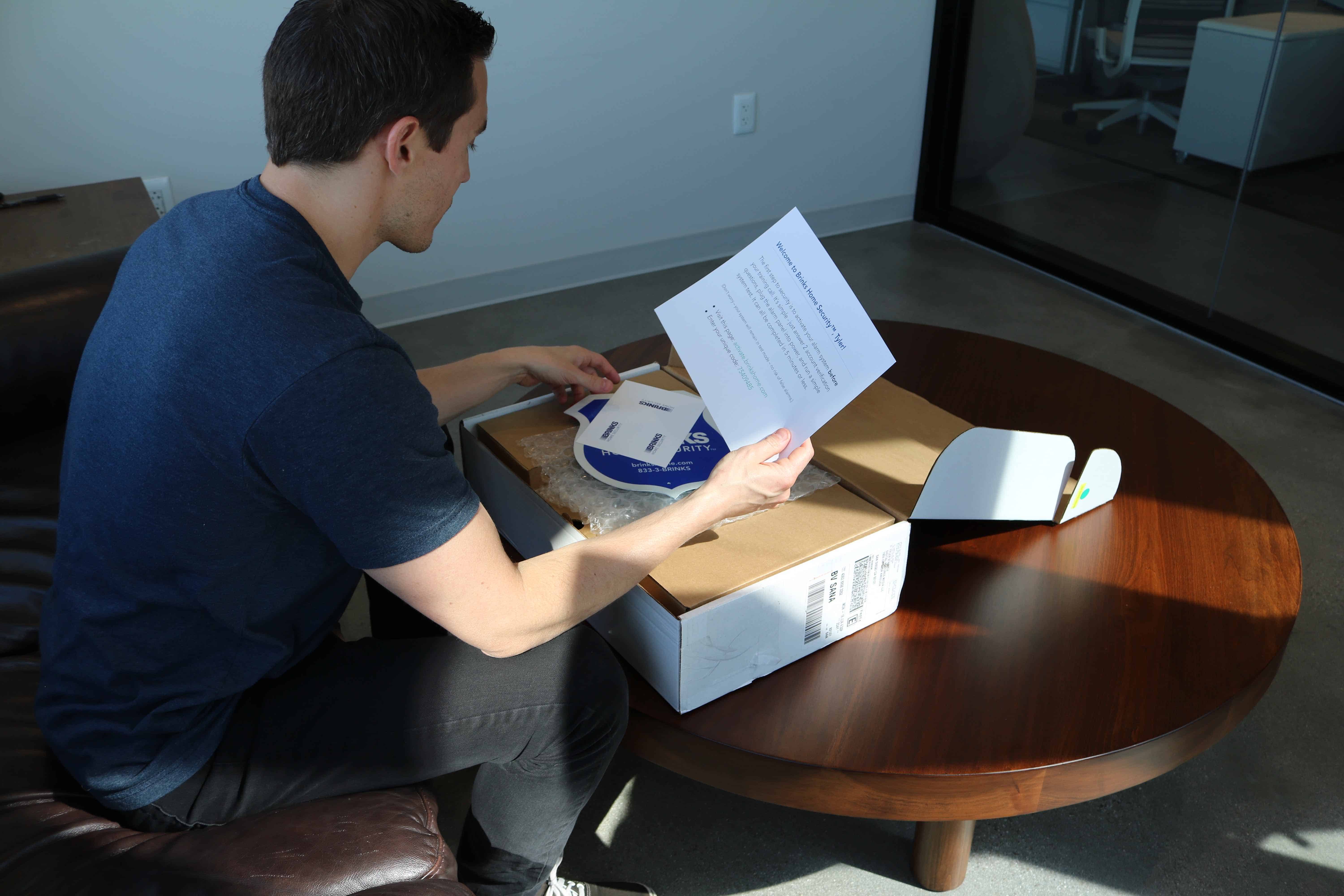
Unboxing our Brinks home security system
Speaking of integrations, Brinks actually offers equipment from Alarm.com, which is known in the industry for offering smart home-friendly equipment.
It all starts with the touch-screen control panel — the hub of the system. Besides Brinks sensors, the control panel works with Z-Wave devices. Z-Wave is a smart-home wireless protocol that enables cross-brand integrations. The fact that Brinks works with Z-Wave makes it compatible with thousands of other Z-Wave-enabled third-party devices.
On top of that, Brinks’ hub integrates directly with Alexa and Google Home. Many security systems work with Alexa, but it’s rare to find one that works as well with Google Assistant as Brinks. Through the integration, we were able to control the system’s arming modes with our voices as well as some of the smart-home components we connected to the control panel.
FYI: The Brinks app supports two-way talking. It’s useful if you want to get rid of someone at the front door trying to sell another subscription and don’t want to get up from the couch.
The knock on Brinks is that it’s merely an ADT clone. And, in fact, there is some truth to that. If you think about it, though, that’s not necessarily a bad thing. Brinks, for instance, offers solid equipment and 24/7 professional monitoring. There’s also an excellent app that gives you control over how your system operates.
On the other hand, Brinks employs another time-honored ADT strategy: requiring customers to invest in three-year contracts. We can tell you from experience that canceling a home security contract isn’t the easiest experience, and Brinks’ hot-and-cold customer service does nothing to help matters. We’d really only recommend Brinks if you’re sure you can stay with it for the next three years. Brinks also mimics ADT when it comes to requiring professional installation.
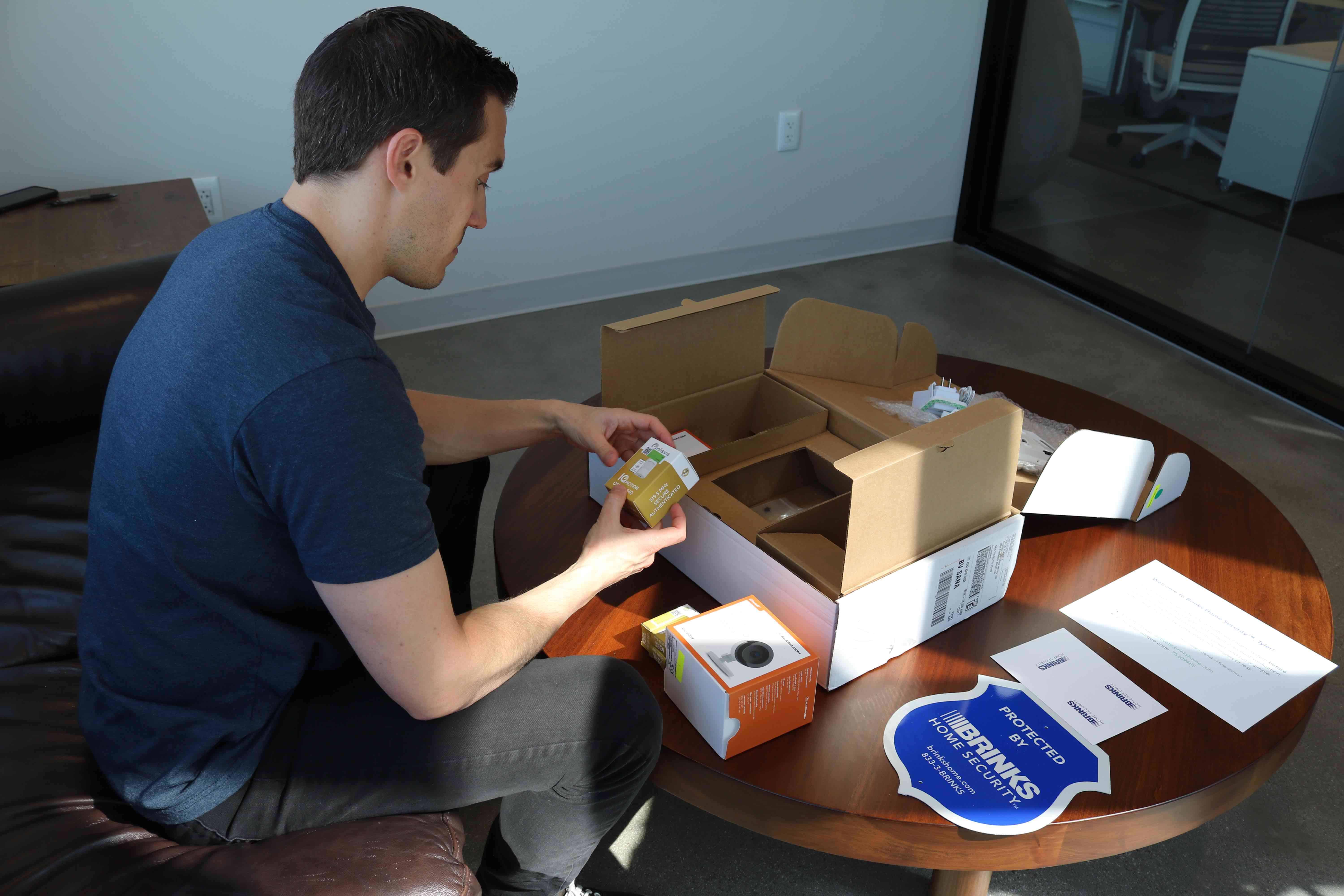
Checking out my Brinks wireless motion sensor
For all its attempts to ape the ADT model, Brinks isn’t ADT. Brinks’ service is good, for instance, but ADT’s is definitely a cut above. And while Brinks monitoring service is certainly comparable to ADT’s, it’s a bit slower. In fact, it’s even slower than the industry average. In our own tests, we found response times of between 40 and 60 seconds. We found the same type of discrepancy when we compared the Brinks and ADT apps. The Brinks app allows you to control your system, and it includes an easy, straightforward interface it doesn’t offer quite as many functions as you get with ADT.
Why choose Brinks, then? Simple: Brinks offers a lower price than ADT. If you don’t need the extra little amenities, a lower price is always a good thing.
| Monitoring Options | Professional only |
|---|---|
| Installation | DIY |
| Smart Platform Integration | Alexa and Google Home |
| Equipment Cost | From $199 |
| Monthly Monitoring Cost | From $39 |
| Contract Length | 36 months |


There’s no question that Ring is the industry leader when it comes to doorbell cameras. Ring invented these devices, and it continues to dominate the market more than a decade after bringing out its first device. This page isn’t about video doorbells, though. It’s about security systems. We’ll be honest, Ring’s doorbells are a big part of why we decided to include the company on this list, but we need to dig into all the other system components if we’re going to give a complete picture of a Ring security system.
To its credit, Ring doesn’t rest its reputation entirely on its doorbells. In fact, within a year after Ring had established its lineup of security cameras and video doorbells, it released Ring Alarm, its full system option. Ring Alarm provided Ring cameras with a context. It integrated them into a full network of sensors to provide total home security protection. One of the nice things about these systems, though, is that because Ring began life as a camera company, it was well-positioned to become a major player in the DIY market when it began offering whole systems. Ring systems remain an incredibly popular option for budget-conscious consumers.As with most home security companies, Ring Alarm’s pricing involves two separate considerations. As a starting point, you have to pay for equipment. You can buy devices up-front and add to your system as your needs grow, or you may qualify for an Affirm payment plan. That plan requires a $500 investment and many of Ring’s packages cost less than that.
Here’s a complete rundown of Ring’s various kits. Again, though, it’s easy to put together a system a la carte.
| Ring Alarm Kits | Regular Price |
|---|---|
| 5-piece | $199 |
| 8-piece | $249 |
| 10-piece | $259 |
| 14-piece | $419 |
The other half of the pricing equation is monitoring. As with SimpliSafe, though, you have choices. You can go with professional monitoring for $20 a month, $18 if you sign up for a full year. You can also self-monitor for free, though. You get real-time alerts and access to live video footage. Or you can opt for something in between by paying for video storage without monitoring. Five dollars a month pays for one camera. $10 pays for an unlimited number of cameras.
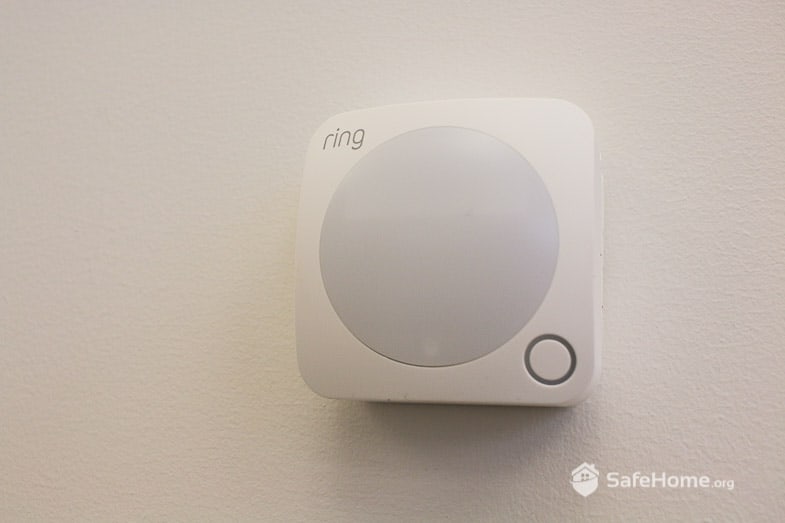
The Ring motion detector installed and ready for action
Ring Alarm is pretty lean in terms of equipment, but Ring makes up for that with its extensive catalog of video monitoring equipment. There are four different lines of Ring cameras and eight versions of Ring Video Doorbells.
We like to think of Ring Alarm as Ring’s indoor-focused security system. It comes complete with most sensors you’ll need to detect break-ins, like motion sensors and entry sensors. There are also third-party smoke alarms compatible with the hub.
For outdoor security, the Ring cameras take charge. We especially like the Ring Spotlight Cam — a line of outdoor cameras with built-in motion-sensing spotlights. The lights turn on automatically when they detect movement, providing security lighting that deters burglars.
Pro Tip: I jumped at the opportunity to set up the Ring system while my kids were napping. It was not a good idea. The sensors detected movements when they rolled over in their beds, leading to false alarms and a lot of tears (from me).
We’ve been testing Ring cameras long before Ring Alarm hit the shelves. By the time we first tested their security system, we already had Ring cameras installed. That made the DIY setup a lot easier; the whole process took under 20 minutes to install. That said, if you’re also installing security cameras and video doorbells, give yourself at least a couple hours to finish the setup. Some cameras and doorbells require hardwiring.
Our favorite aspect of Ring is the app. It ties the security system and cameras together. (Rightly so, because Ring doesn’t offer a touch-screen keypad.) The app will be your primary control center.
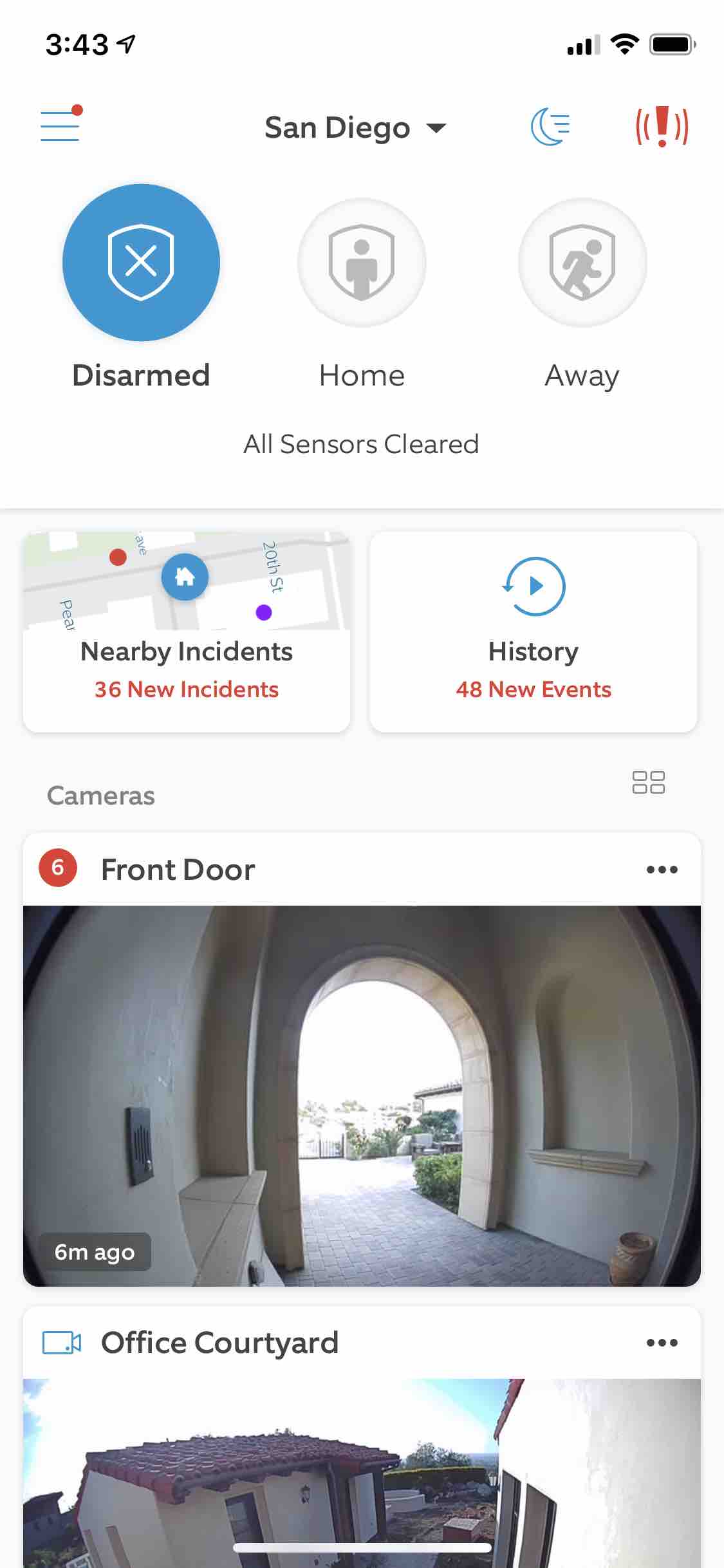
Scrolling through the homepage of the Ring app
Rest assured that the Ring app isn’t difficult to master. It’s the same app Ring has been using since 2013, and it has received a ton of updates and refinements since. Ring has been doing a good job so far. The app offers a lot of features, from quick arming modes to deep customizations in the settings page. But it still provides user-friendly navigation and controls. It’s right up there with ADT’s app in terms of user-friendliness.
| Monitoring Options | 24/7 professional and DIY |
|---|---|
| Installation | DIY |
| Smart Platform Integration | Alexa and Google Home |
| Equipment Cost | From $244.95 |
| Monthly Monitoring Cost | $20 |
| Contract Length | 1-12 months |


If you’re looking for a DIY Vivint alternative, abode might be the right choice for you. The company was founded in 2014 and became an immediate hit because of its innovative hub that incorporates smart-home integrations and home automation controls. It’s actually a smart-home hub and a security system hub in one. Yet, abode costs only a fraction of what you’ll pay for a Vivint system.
We tested the most advanced of the three hubs abode offers, the iota All-in-One and found it integrates seamlessly with our existing smart home hardware, from TVs to front door locks. Even if you already have a home automation system in place, abode can fit right in. It even works with Apple HomeKit, one of the few systems out there that does.abode’s equipment pricing is in line with DIY options like SimpliSafe and Frontpoint. Take note, though: abode keeps prices low by including less equipment in its packages. Abode’s iota All-in-One system costs $379.99. That’s $100 more than SimpliSafe’s Starter package, and the Starter comes with two more entry sensors than the iota and a keypad. On the plus side, abode does include the first month of professional monitoring, a $24.99 value, for free.
Speaking of professional monitoring, abode offers only one option for the service. However, there’s a premium self-monitoring option that unlocks features like home automation and video recording for much cheaper.
| Features | Standard Plan (premium self-monitoring) | Pro Plan (professional monitoring) |
|---|---|---|
| Professional monitoring | No | Yes |
| Cellular backup | No | Yes |
| Video recording | Yes | Yes |
| CUE home automation | Yes | Yes |
| Free ground shipping for add-on equipment | Yes | Yes |
| Exclusive deals | Yes | Yes |
| Monthly price | $6.99 | $24.99 |
| Annual price | $69.99 | $229.99 |
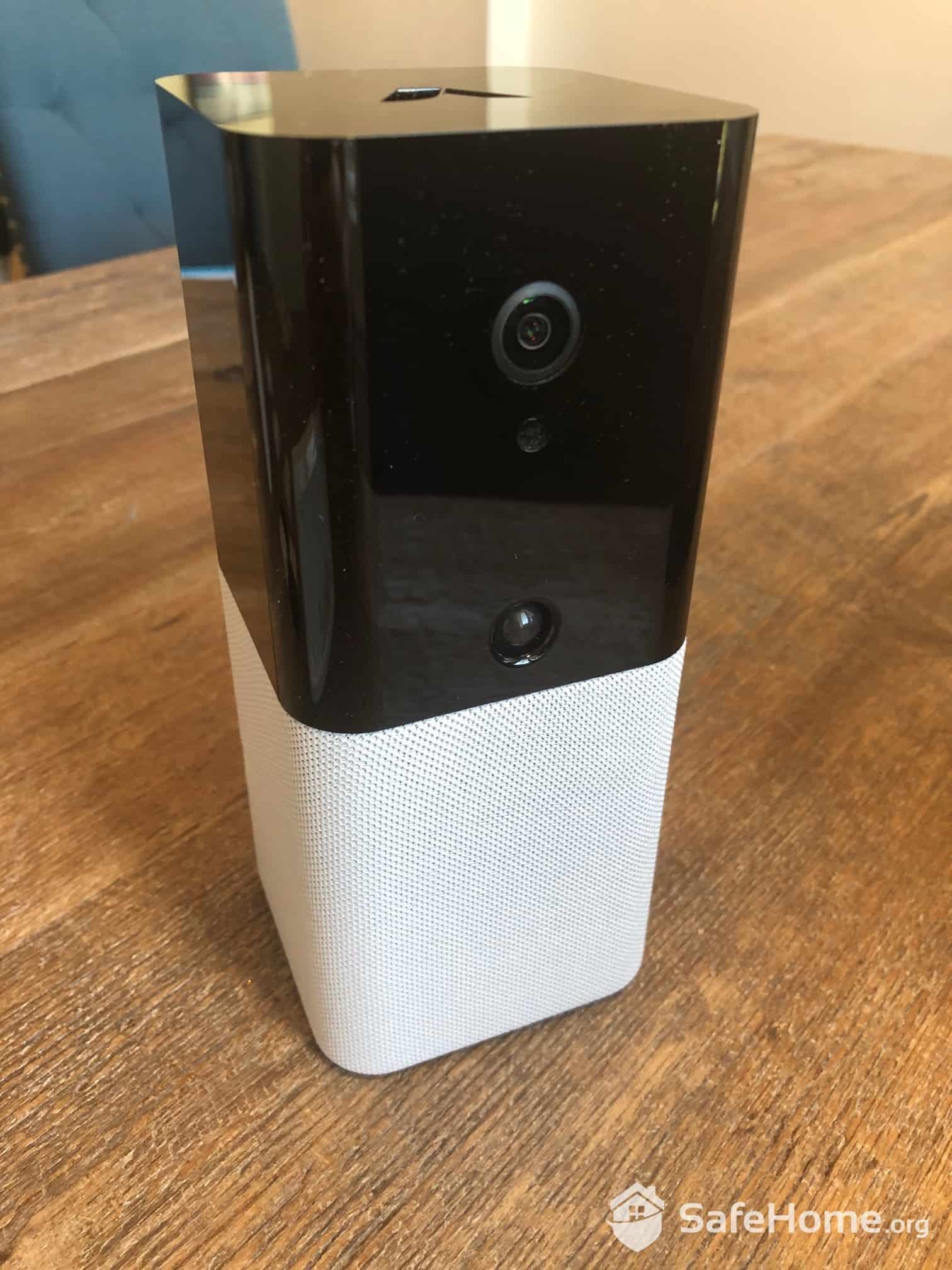
Another angle of the sleek iota All-in-One hub that has a built-in security camera.
The reason we picked the iota All-in-One hub is that it comes with a built-in security camera and motion sensor. That’s why it’s called an “All-in-One” hub. Besides that, it’s also an all-in-one hub because it can communicate with other devices using the most popular smart-home protocols and smart platforms. It works with:
While that may not seem like a very long list, abode integrates with more smart-home devices than other systems. Take SimpliSafe’s integrations for example. It works with Alexa and Google Assistant. That’s it.
abode’s Zigbee and Z-Wave integrations alone allow it to work with thousands of other brands. It can integrate with brands like Kwikset and Yale for smart access control, Nest and ecobee for smart temperature control, and First Alert for smart fire protection.
Pro Tip: I connected my Bose speakers to the abode security system. It let me adjust the volume of the siren and change the notification chimes. I even set up an automation so it starts playing WWE wrestler Stone Cold Steve Austin’s theme music when I arrive home from work. Rock on!
There’s no question that abode’s equipment setup is easy and straightforward. We had our entire system set up in under 15 minutes, something of a record for us. That only got us set up physically, though. When it came to the smart-home side of things, we had significantly more trouble.
For example, when we tried to connect our Nest Thermostat to abode, abode’s app had us log in to our Nest account. We did that, but abode didn’t initially recognize our thermostat. We had to reboot the system and restart the app to fix the issue. All in all, we spent half a day setting up since we have a ton of smart home devices.
The good news is that once we got things set up, the system worked like a dream. As we mentioned, abode works with both Alex and Google Home. However, we decided to use abode’s own home automation platform, CUE. We can report that it is every bit as effective as those other platforms, especially in terms of home security. It comes with an intuitive, easy-to-use interface that gave us total control over the system. With CUE, we were able to customize automation rules, create schedules, and set up routines. We’d certainly put it up against Vivint’s app, one reason we recommend abode as a DIY alternative to Vivint.
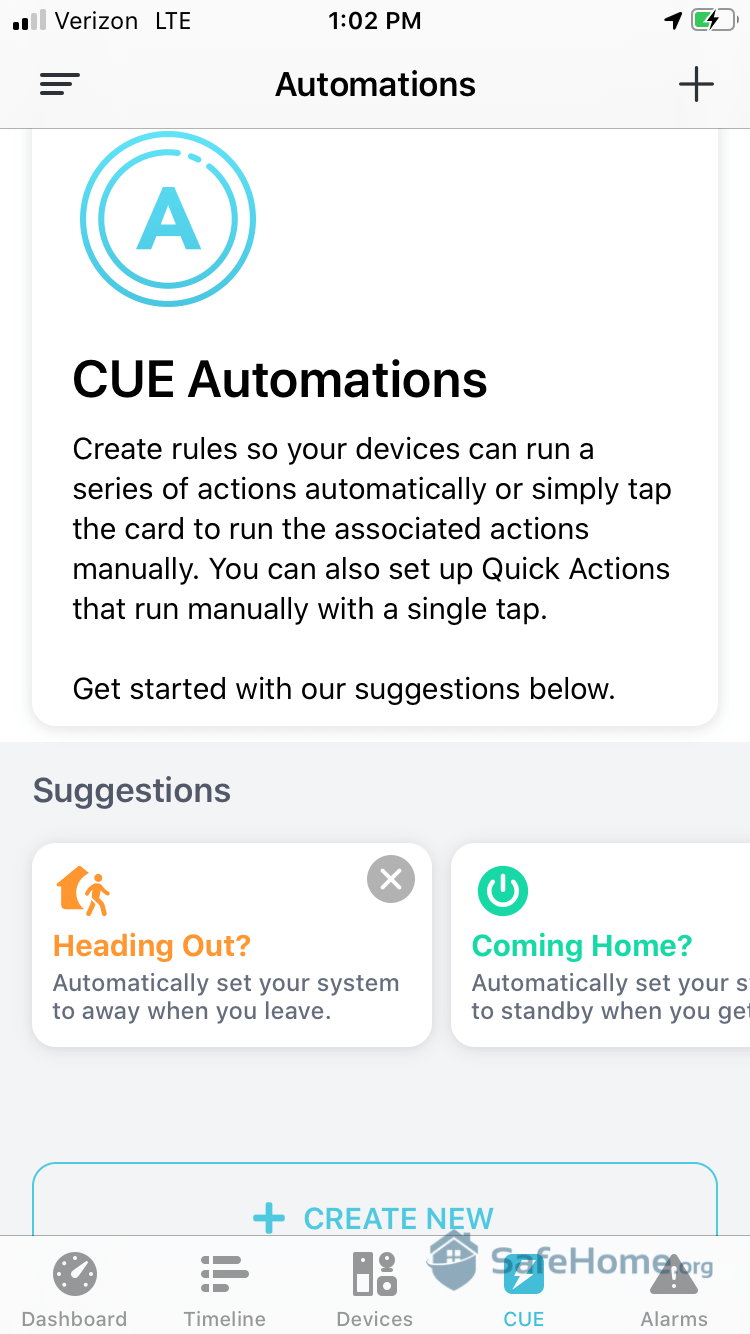
Setting up automations in the abode app
Since our iota Hub came with a built-in camera, we made sure to put a little extra thought on where we put it. Good thing it has Wi-Fi, unlike the Cove Hub we discussed earlier that requires an Ethernet cable. We ultimately placed it in our living room, on a shelf about 4 feet above the ground. That gave the camera just the right vantage point.
FYI: Unlike most indoor cameras, iota’s built-in camera doesn’t tilt up and down. The viewing angle shoots straight out, so we recommend placing it at chest level. For security cameras that can tilt up and down, though, we recommend placing them at least 6 feet off the ground angled slightly downward.
abode doesn’t offer a lot of sensors, nor does it have any camera besides the indoor/outdoor Abode Cam 2 and the iota’s built-in one. Not that abode is lacking on the equipment front. Even the trio of motion sensors, entry sensors, and glass break sensors can be enough for most homes. But if you need more than that, we hate to break it to you: abode isn’t the best option. It even lacks a smoke alarm and instead offers a listening device to detect the sound of your existing smoke alarms.
| Monitoring Options | Professional and DIY |
|---|---|
| Installation | DIY |
| Smart Platform Integration | Alexa, Google Home, and Apple HomeKit |
| Equipment Cost | From $139.99 |
| Monthly Monitoring Cost | From $6.99 |
| Contract Length | Month-to-month |

Deep Sentinel takes a very particular approach to home security, one that a lot of homeowners will find compelling. The company only sells outdoor security cameras and the base stations that go with them. You can’t get entry sensors, glass break sensors, indoor cameras, or video doorbells. Now, aside from the fact that this simplifies the buying process, there is some pretty solid theory behind this approach. Why buy a lot of indoor devices when your goal is to keep home invaders out? Deep Sentinel is sure it can do that through a combination of top-of-the-line external cameras and professional monitoring with video surveillance.
At this point, you might be saying to yourself, less equipment and the same level of security as other companies? Where do I sign up? Here’s the thing, though. Even with less equipment, Deep Sentinel costs a good bit more than most other systems on the market.
First, let’s talk about the equipment. One wireless outdoor camera, a rechargeable battery, and a hub cost $499. The hub can accommodate up to six cameras, but each additional camera costs $200. That’s on the expensive side of security camera pricing, even if you take into account that Deep Sentinel devices all include the latest AI features. Keep in mind, for instance, that a Google Nest Cam (battery), which is capable of facial recognition and person detection, costs $179.
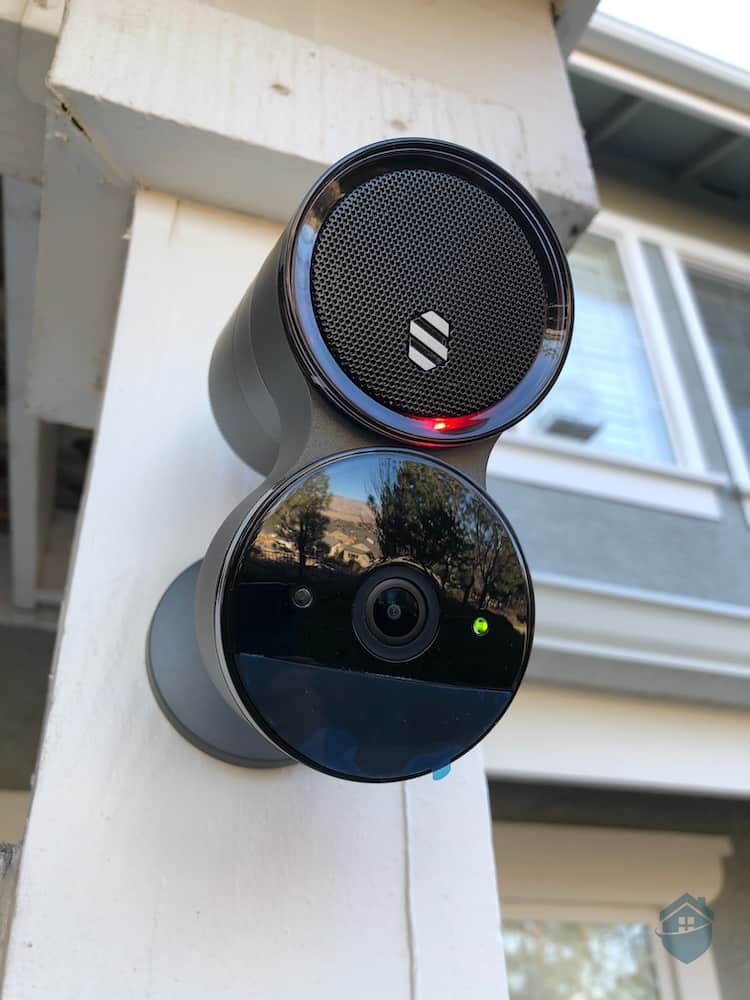
The Deep Sentinel Camera mounted outside my home
That’s for starters. You also have to take account of Deep Sentinel’s monthly monitoring cost; you can’t purchase a system without signing up for a one-year contract. The monthly fee depends on how many cameras you have. It starts, though, at $100 for one-camera monitoring. You then pay $50 more for each camera you add. So for a six-camera system, the monitoring service would cost you a whopping $350 — per month!
FYI: While the cameras are expensive, they’re also durable. They have an IP65 weatherproof rating, which means they’ll work in -4 F and up to 122 F temperatures. My friend in Alaska gets temperatures as low as -35 F and upgraded to Deep Sentinel’s “extreme batteries” to keep their cameras online.
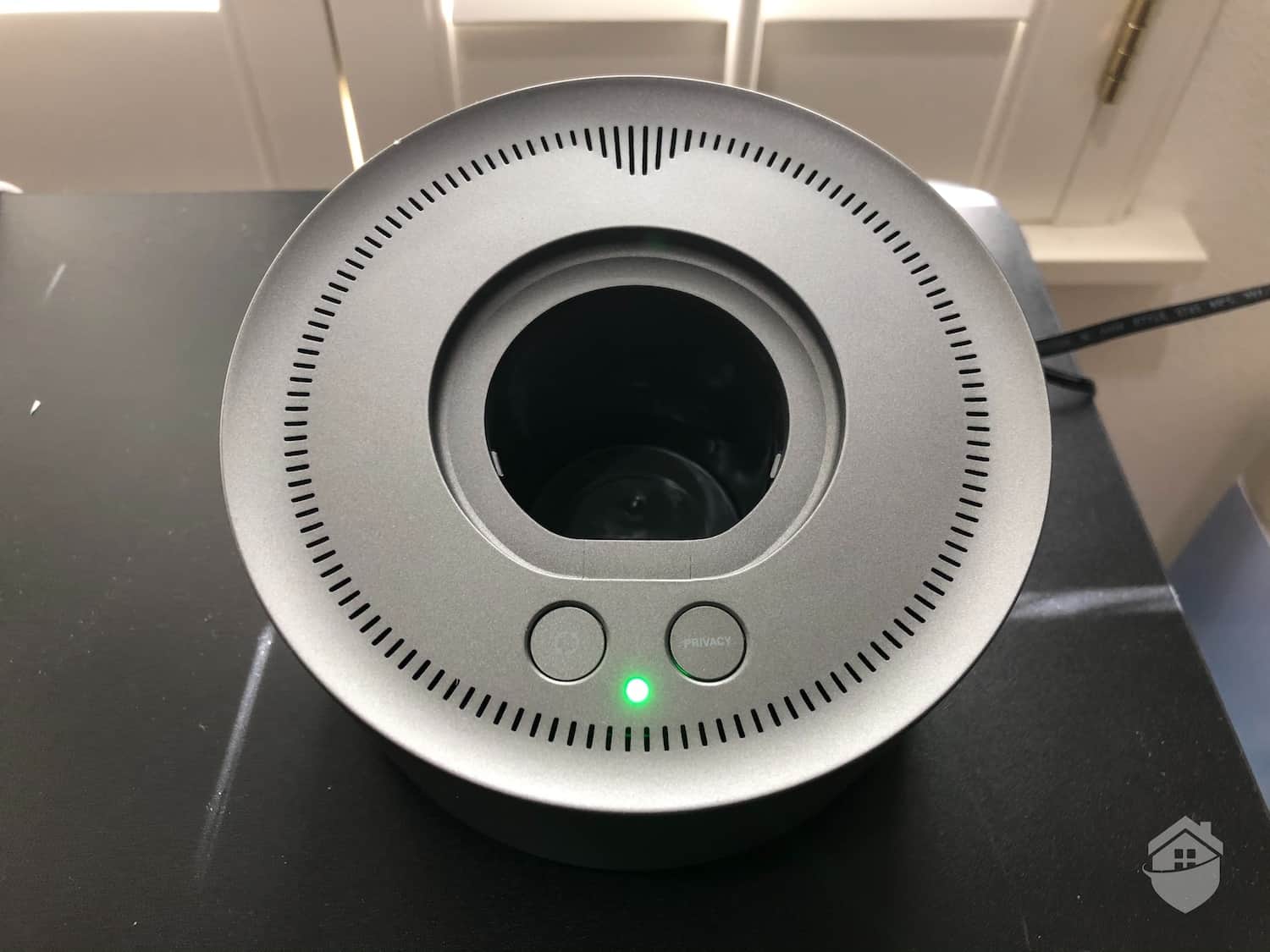
A closeup of the Deep Sentinel hub
Of course, these prices beg the question, why exactly is Deep Sentinel so expensive? The answer has to do with its unique approach to monitoring. Well, it’s not so unique now. Still, only a few companies offer it. It all starts with the cameras that can detect motion and tell apart a person’s movement versus other moving objects. There’s nothing so special about that, though. A lot of security cameras have person detection.
What sets Deep Sentinel apart is that when it detects human movement, it notifies the homeowner and the monitoring center manned by real human guards. Most cameras would notify only the homeowner. Upon receiving the alert, the guards will check the live feed. If they see a real threat, they’ll call the police and engage the intruder with the camera’s two-way talk.
If you noticed, that’s similar to how SimpliSafe’s Fast Protect plan handles the Smart Alarm camera. The difference is that Smart Alarm is an indoor camera; Deep Sentinel allows camera placement outdoors only. That’s for your privacy, and we think it’s a better approach than Fast Protect (more expensive, but better).
We got to test out Deep Sentinel, but we didn’t test it for as long as the other systems because of the cost. That said, we saw that the monitoring service works as advertised. The few times we did simulated break-ins, we heard the surveillance guard’s loud booming voice coming from the cameras. We wished the speakers were louder, especially for homes that are near busy streets, but they are audible enough from about 5 feet to 10 feet.
Take note that Deep Sentinel cameras are DIY-ready. And since the cameras are wire-free and battery-operated, they are a breeze to install. Just make sure to fasten them to the wall with screws – the cameras themselves are eye-catching and expensive.
Pro Tip: My camera batteries lasted about three months. Replacing them took seconds. It took me longer to find the right ones at the store.
One thing that troubled us, though: Deep Sentinel only offers protection against burglars. What are we supposed to do in the event of a fire? We can live without an indoor camera, but we like the security of knowing smoke, CO, and flood detectors are keeping us safe from other types of home emergencies.
| Monitoring Options | 24/7 professional and DIY |
|---|---|
| Installation | DIY |
| Smart Platform Integration | None |
| Equipment Cost | $399 |
| Monthly Monitoring Cost | $60 |
| Contract Length | 1-12 months |
From Anthony Travaglia, Retired Police Officer, Home Security Expert
A reliable security system can allow faster response times from police, which in turn gives police a better chance at arriving while the crime is in progress. For instance, while on patrol in the north east part of Las Vegas I was dispatched to a burglary in progress, from a home security monitoring company. I arrived with a couple other officers, including one K9 officer, to find the front door kicked in and the alarm system going off.
Myself and the other officer made entry into the home and began our slow, methodical search. After searching the entire house we could not find anyone inside. The K9 officer decided to let the dog go search the house just in case we missed something. The dog kept alerting us to the hallway where we noticed the attic access door was a little ajar. We eventually found the suspect hiding in the attic, thanks to our four legged friend! The suspect stated he attempted to flee, but as he was doing so officers were already arriving, so he hid in the attic.
Those precious seconds allowing officers to arrive quickly meant the difference of the burglar getting away and being caught.
If we’re going by definition, a home security system is any network of devices working together to protect your home. This can be a group of security cameras placed around the house, sensors monitoring entryways that sound an alarm when triggered, or even something as simple as an electrified fence around a property.
The security systems we evaluated, however, are whole-home security systems that offer both security equipment and professional monitoring services. These are systems that offer a variety of equipment, from security and environment sensors such as smoke alarms to security cameras and home automation devices. They also monitor their equipment, which means if anything happens, they’d be able to alert you or even the police for emergency response.
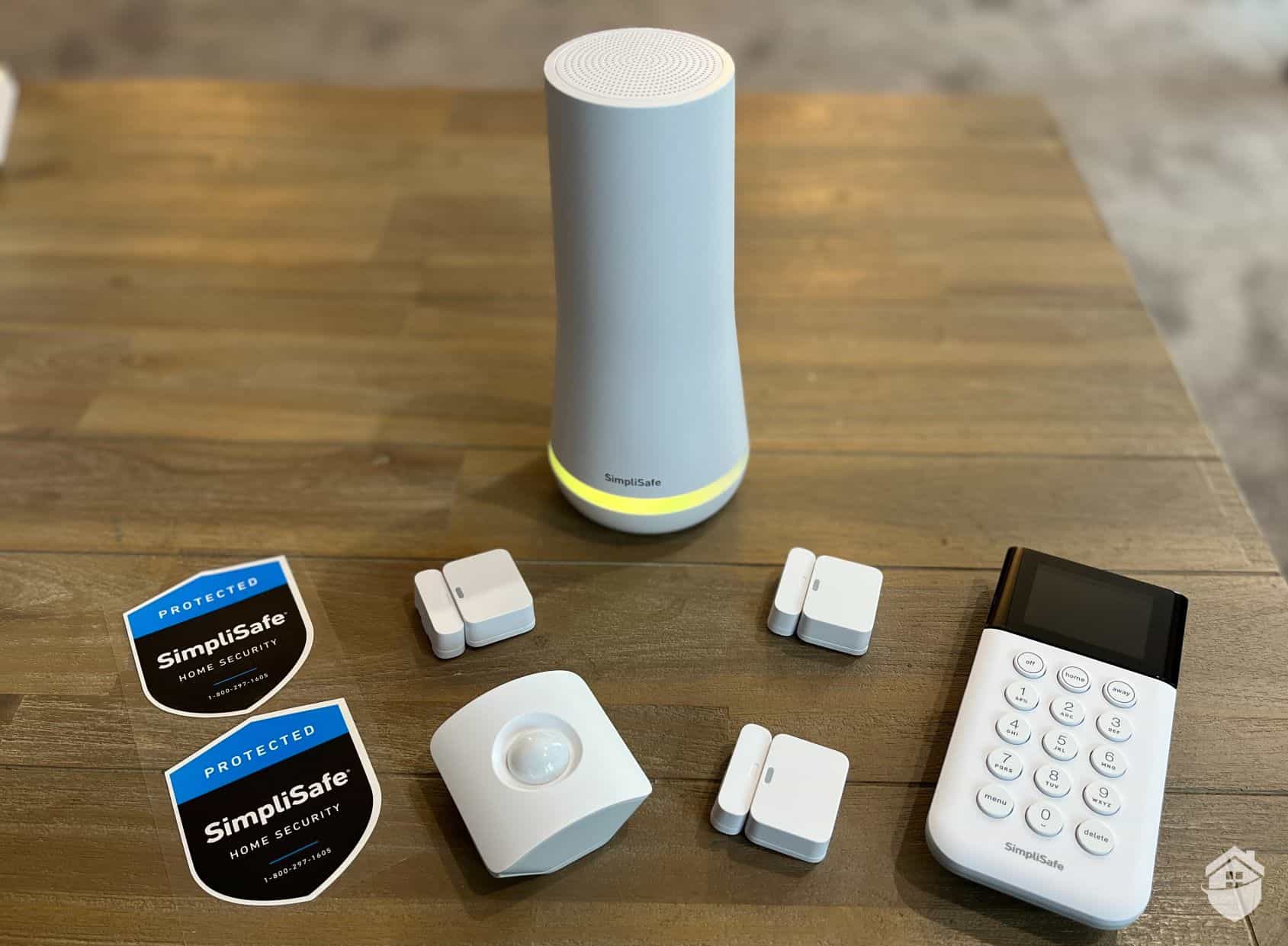
SimpliSafe Essentials Kit
It’s in our opinion that a security system is necessary for most people. While it’s true that the main function of a security system is to alert you after a break-in has occurred, there are several other benefits to using a security system. Here are a few examples:
The data backs these examples. Our research on home security uncovered:
So as you can see, security systems can be really useful. And if you don’t have one yet, now’s the time to consider getting a reliable security system for your home.
It’s actually very easy to buy a security system. For more traditional systems like Vivint and ADT, you’d start by calling the company and asking for a quote depending on how you want to pay for your equipment (upfront or with financing). They’d help you build your security system, and after that, they’d install the system for you. Once the equipment is set up, professional monitoring will activate.
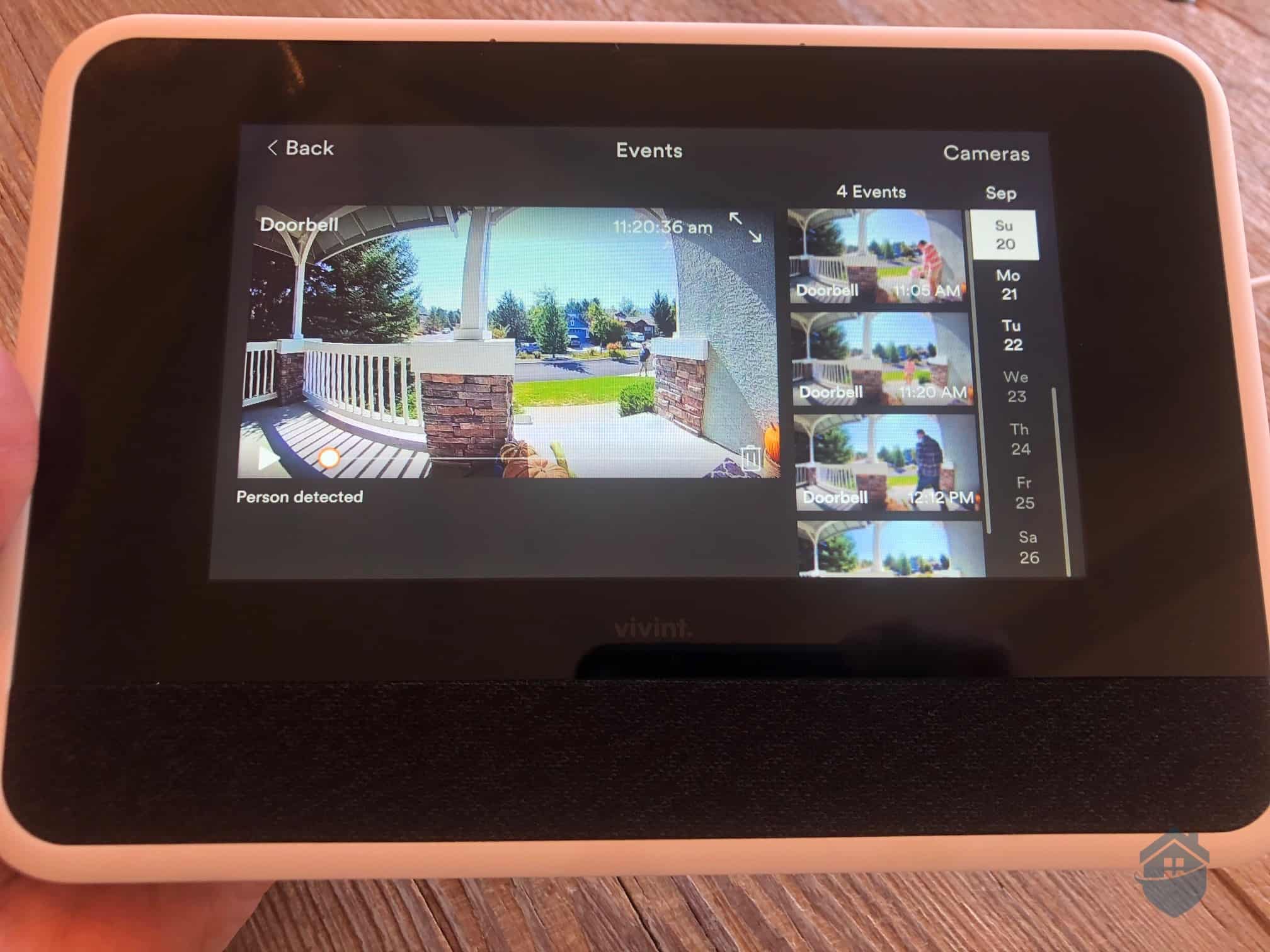
Reviewing my people detection notifications on the Vivint Smart Hub
As for most DIY security systems today, you can buy everything online. You can even sign up for contract-free professional monitoring at checkout, making the whole buying process simpler and more convenient. However, after that comes the challenging part – installing the security system. We have plenty of guides to help you, though, from where to place your sensors to maximizing the use of security cameras.
>> Check Out: Home Security System Buying Guide
Of course, the best security system for your neighbor might not be the best one for you as well. There’s a lot of factors that go into the decision-making, including things like whether you own the place or are renting, where your house is located (urban, the suburbs, a rural town, etc.), and whether or not you have pets. We made lists of the best security systems for those different scenarios:
Our top 10 recommendations list is full of popular names in the industry like ADT and SimpliSafe, but you might have noticed that some well-known security systems didn’t make the cut. Some of them are Link Interactive, the Arlo Security System, Lorex, Bay Alarm, and CPI Security.
Those systems were included in the pool of 33 security systems we evaluated. And it wasn’t that they were bad; the ones that made our top 10 list were simply better.
Let’s look at a few examples.
As you can see, security systems didn’t make our top 10 list for various reasons, but usually, the reason is that we want to make the best recommendations. So next, let’s talk about how we ranked the security systems we tested and how we came up with our top 10.
Curious about how we ranked our top 10 list? Well, we personally unbox the security systems and try them out to see how they measure up against the competition. With thousands of hours of hands-on testing under our belts, we have a proven process of getting to the “who’s who” in home security. Have a look for yourself!
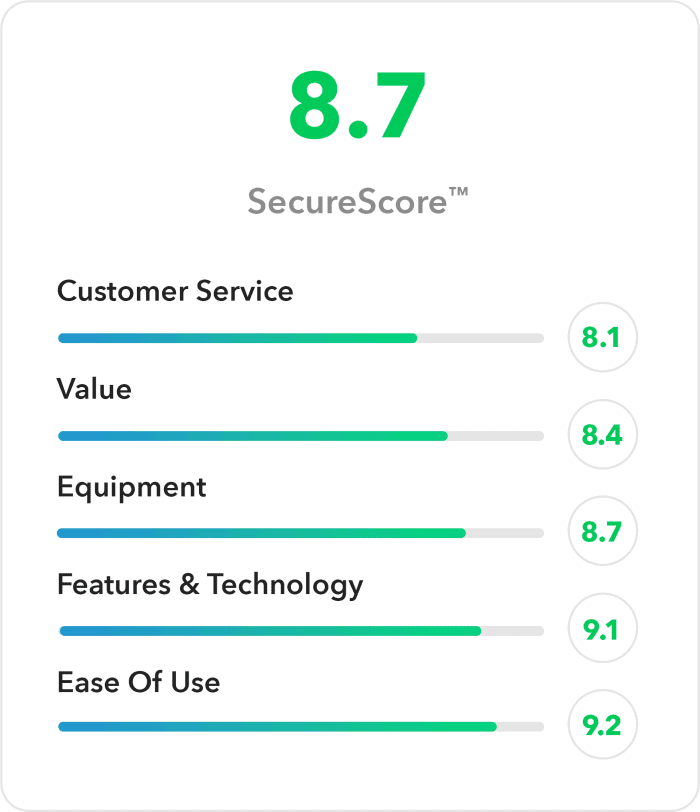
Our ranking system, SecureScore™.
We use a proprietary ranking system to give every home security system a numbered score, from 1 to 10. We call it the SafeHome.org SecureScore™.
The SecureScore™ can be a simple way for you to compare security systems. It condenses the results of hours of research and months of testing and evaluation by us. The breakdown of our ratings for Customer Service, Value, Equipment, Features & Technology, and Ease of Use can also give you a clear overview of the system’s strengths and weaknesses.
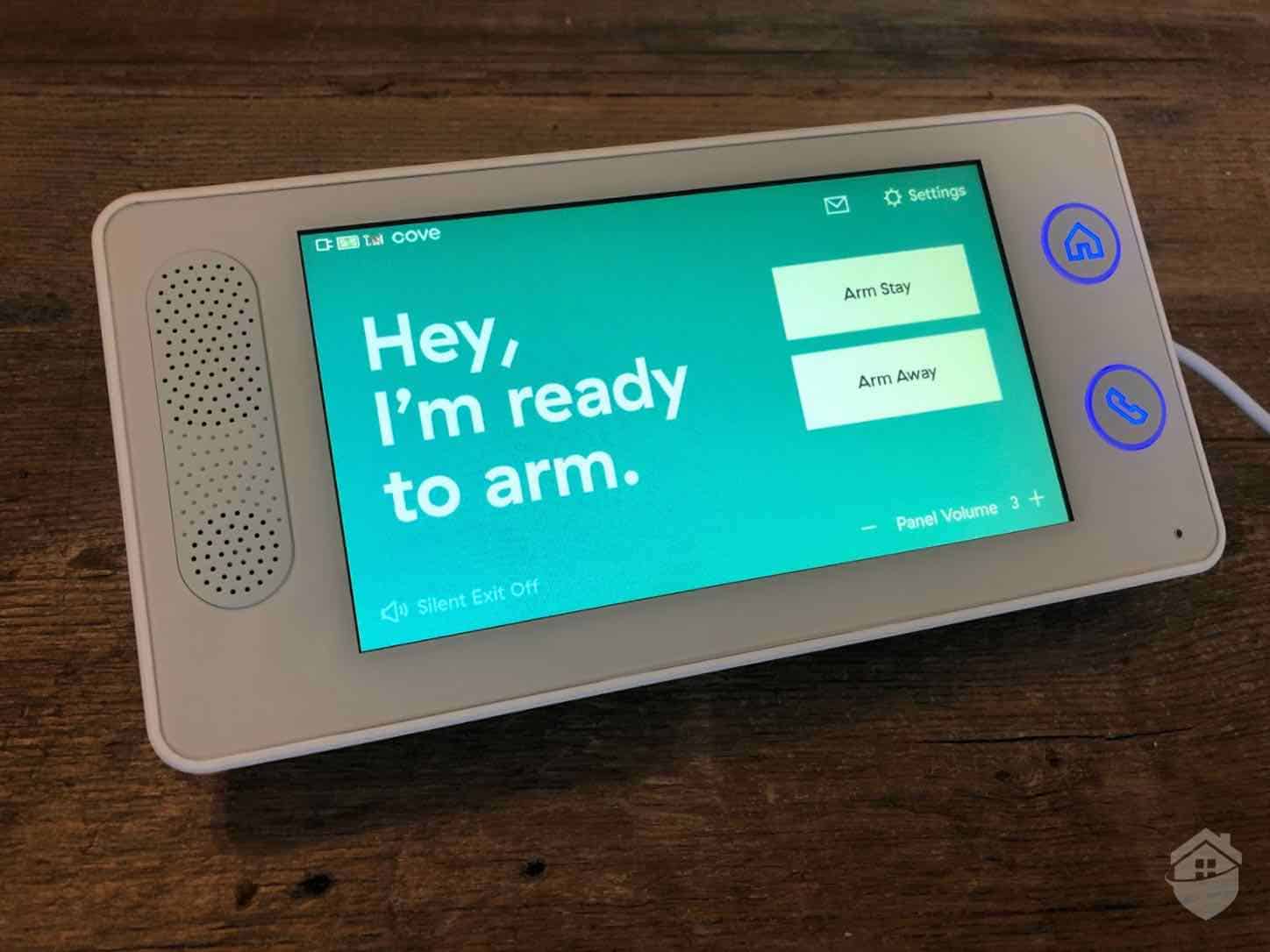
Cove's Touchscreen Alarm Panel
That being said, there are some crucial factors we simply can’t summarize with a SecureScore. That’s where guides like this come in, where we test security systems side-by-side for an even more in-depth comparison.
Pro Tip: We don’t recommend trusting any “expert” industry site that doesn’t readily share their editorial guidelines or ranking methodology. Remember, not all advice is created equal.
Keep in mind that all our recommendations come from first-hand testing experience and our deep understanding of the home security industry. All the security systems we listed are the best in the industry right now, so any of them could be the right choice. Now it’s up to you to choose the best security system for your home based on your security needs, budget and budget.